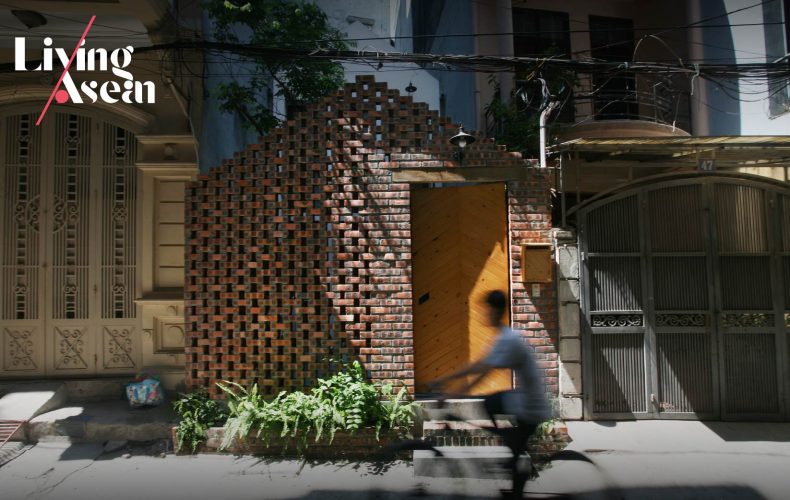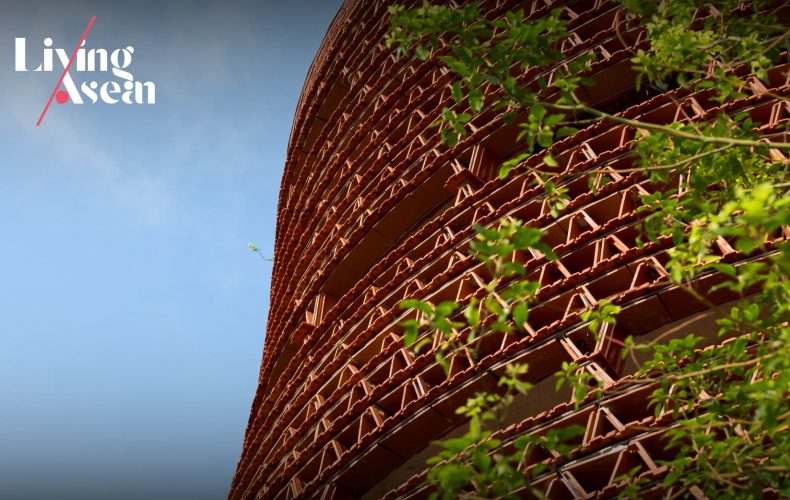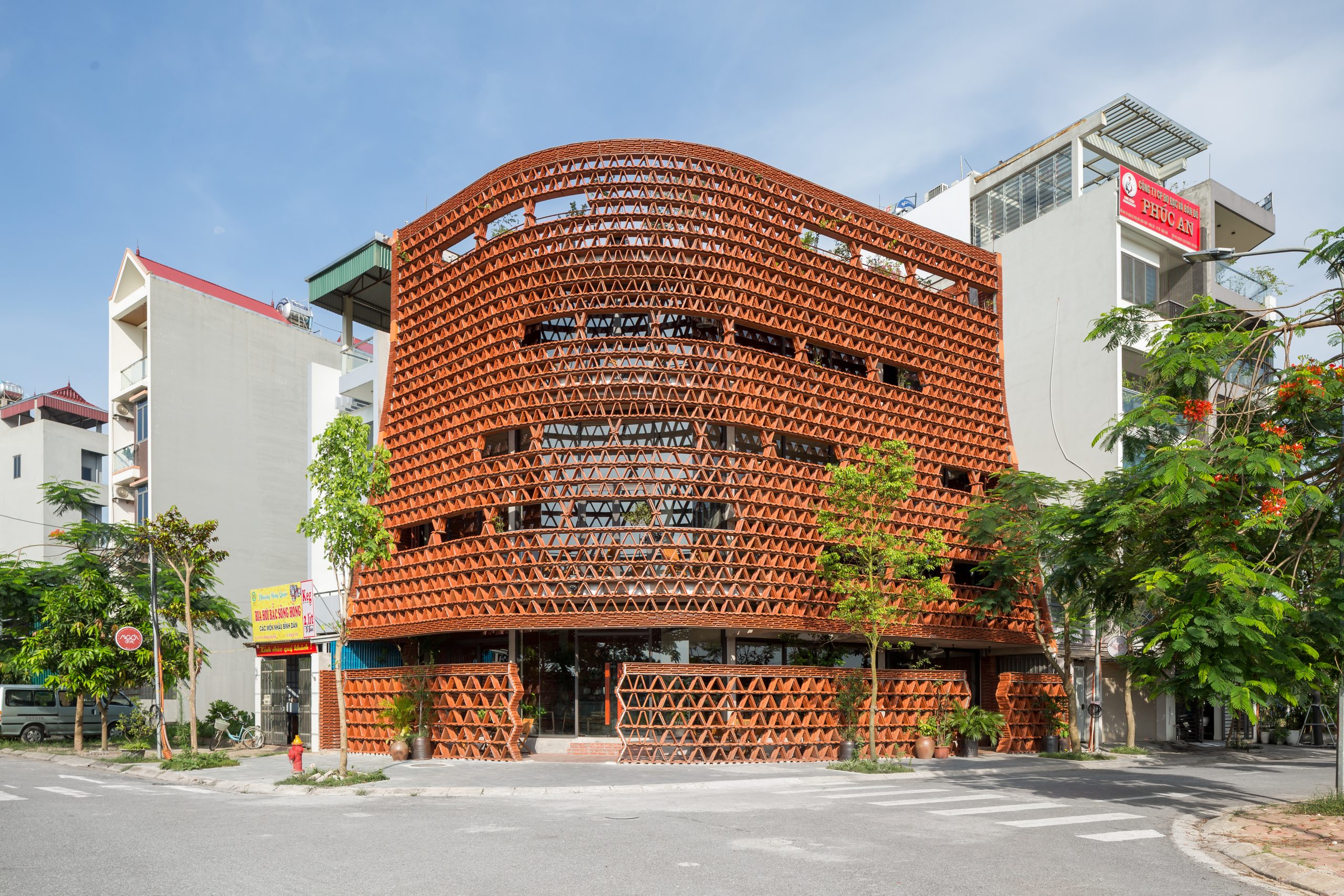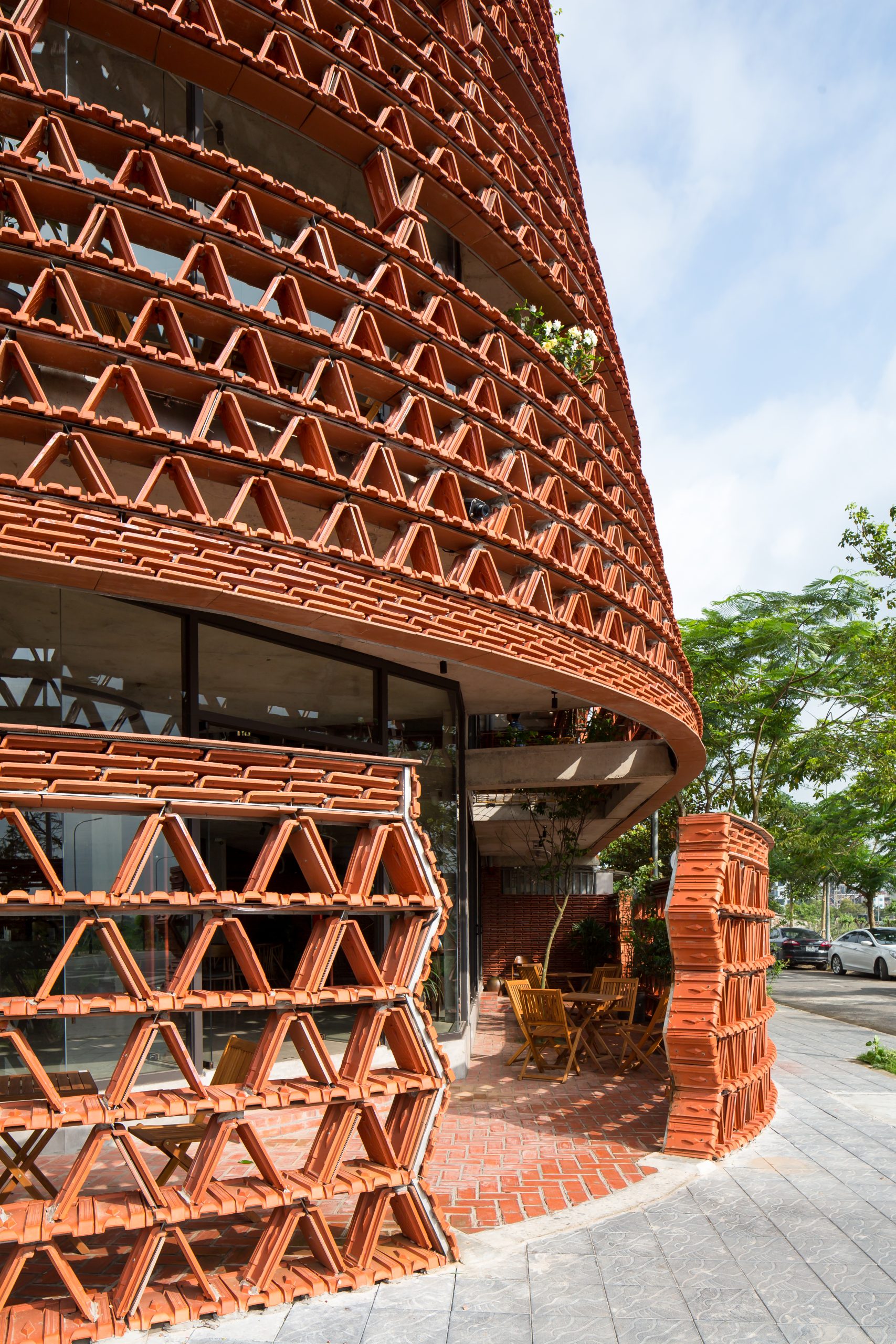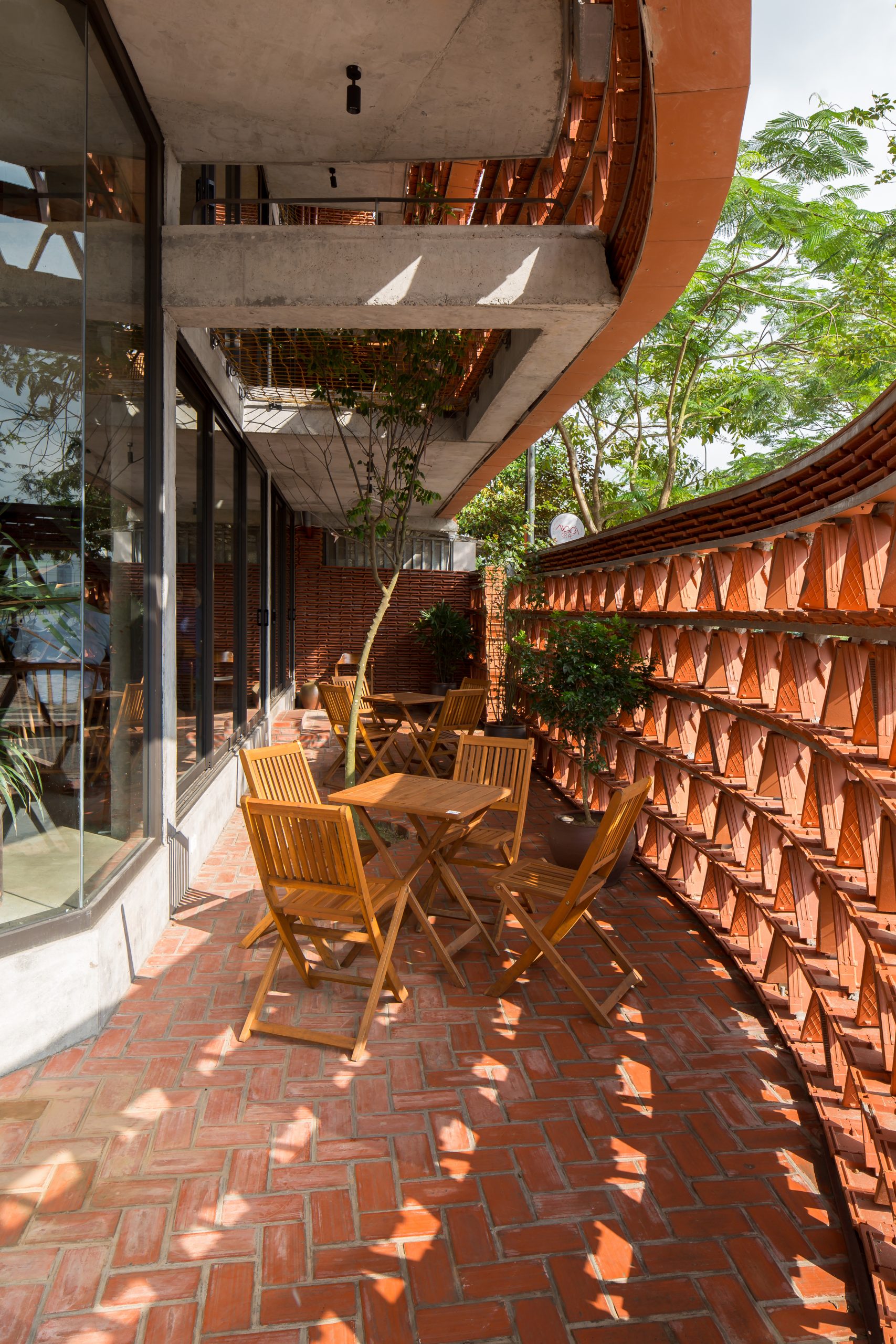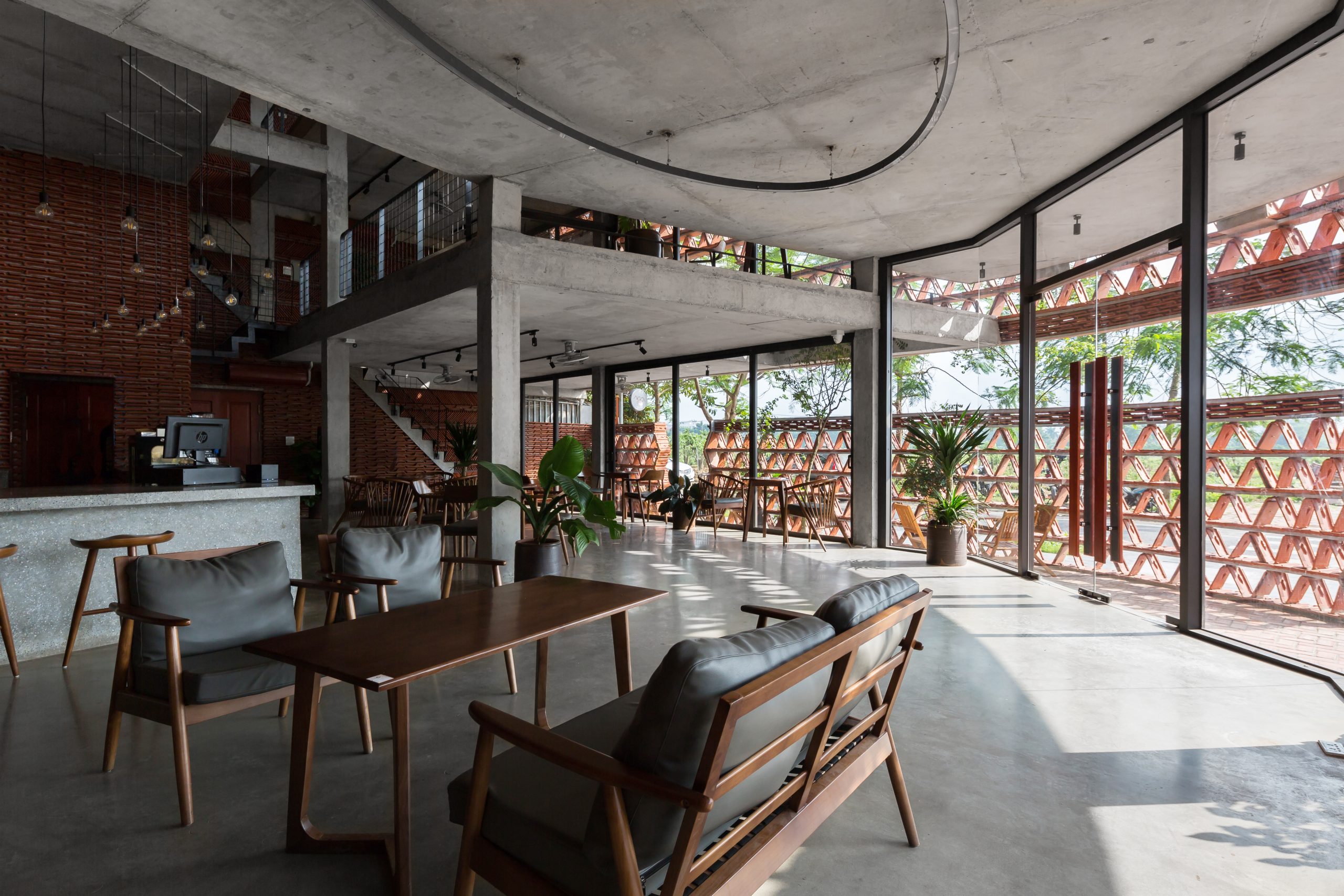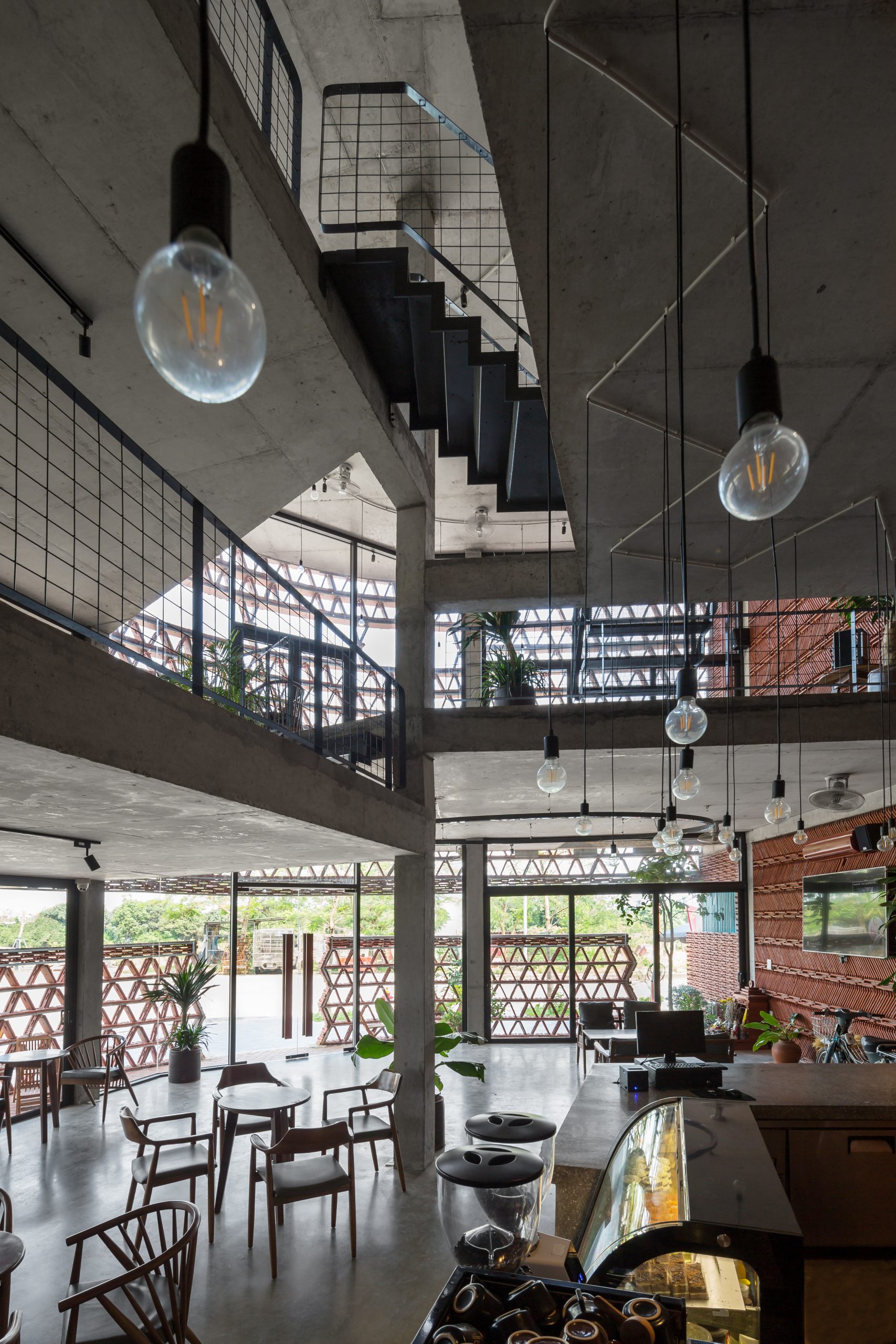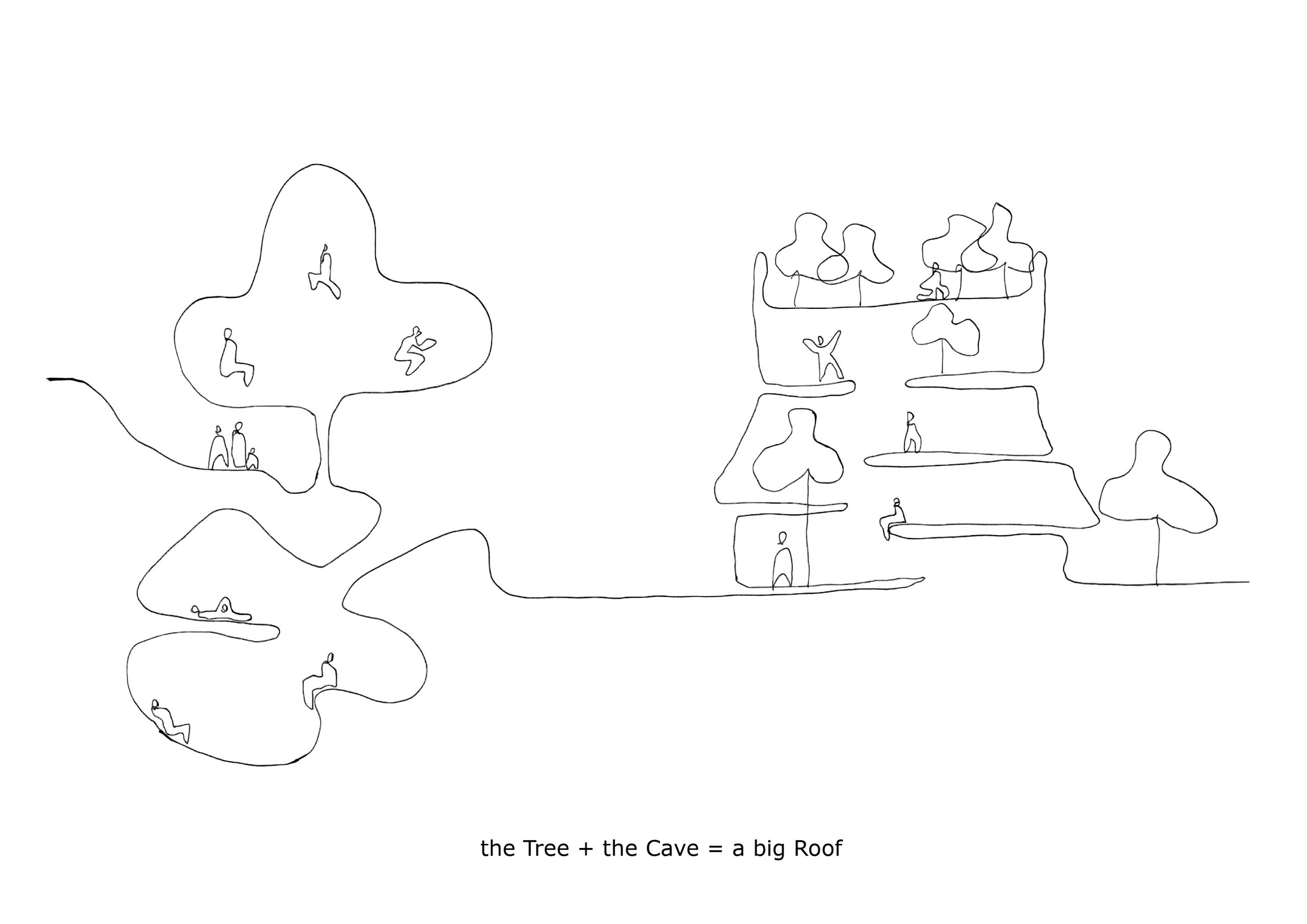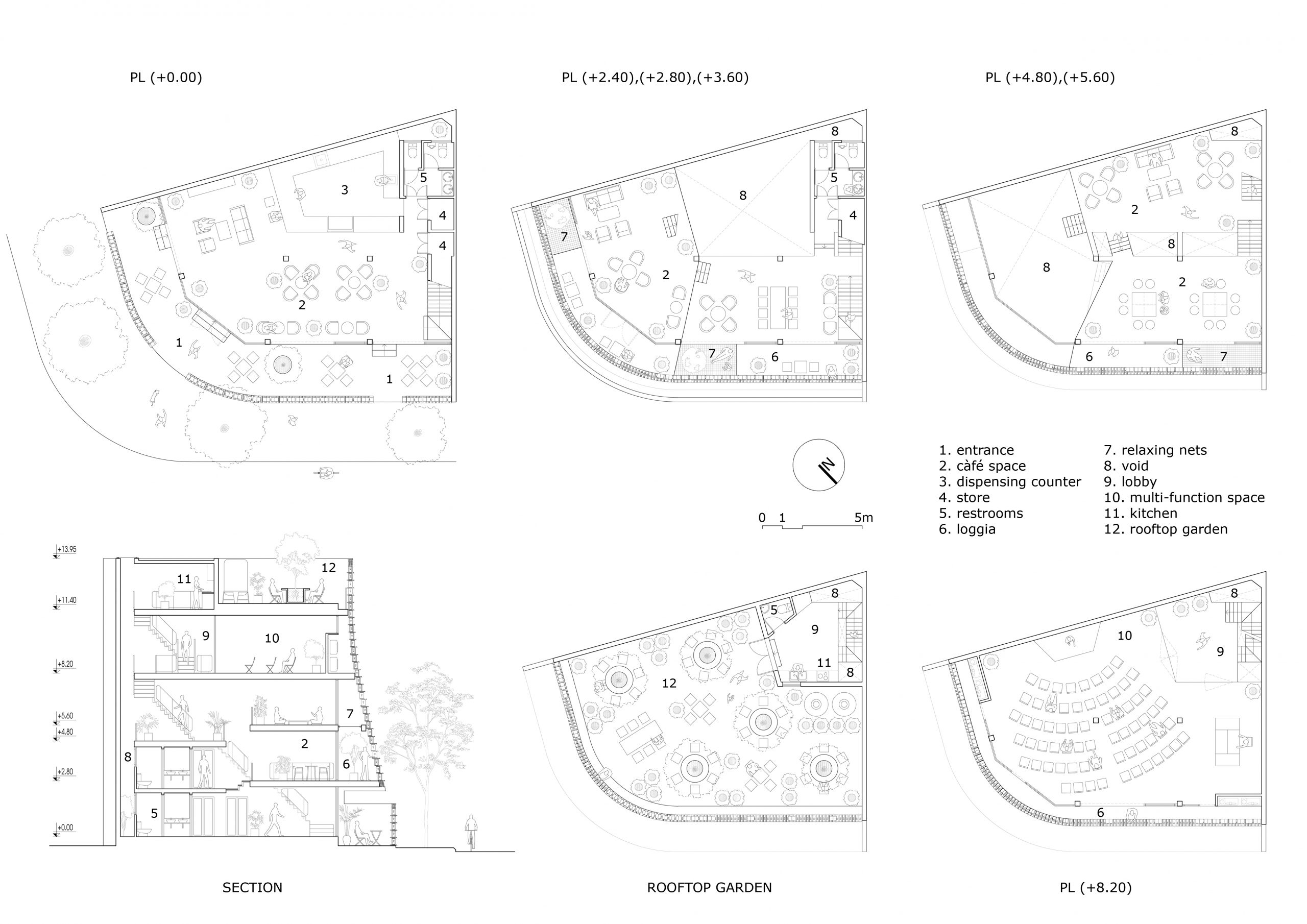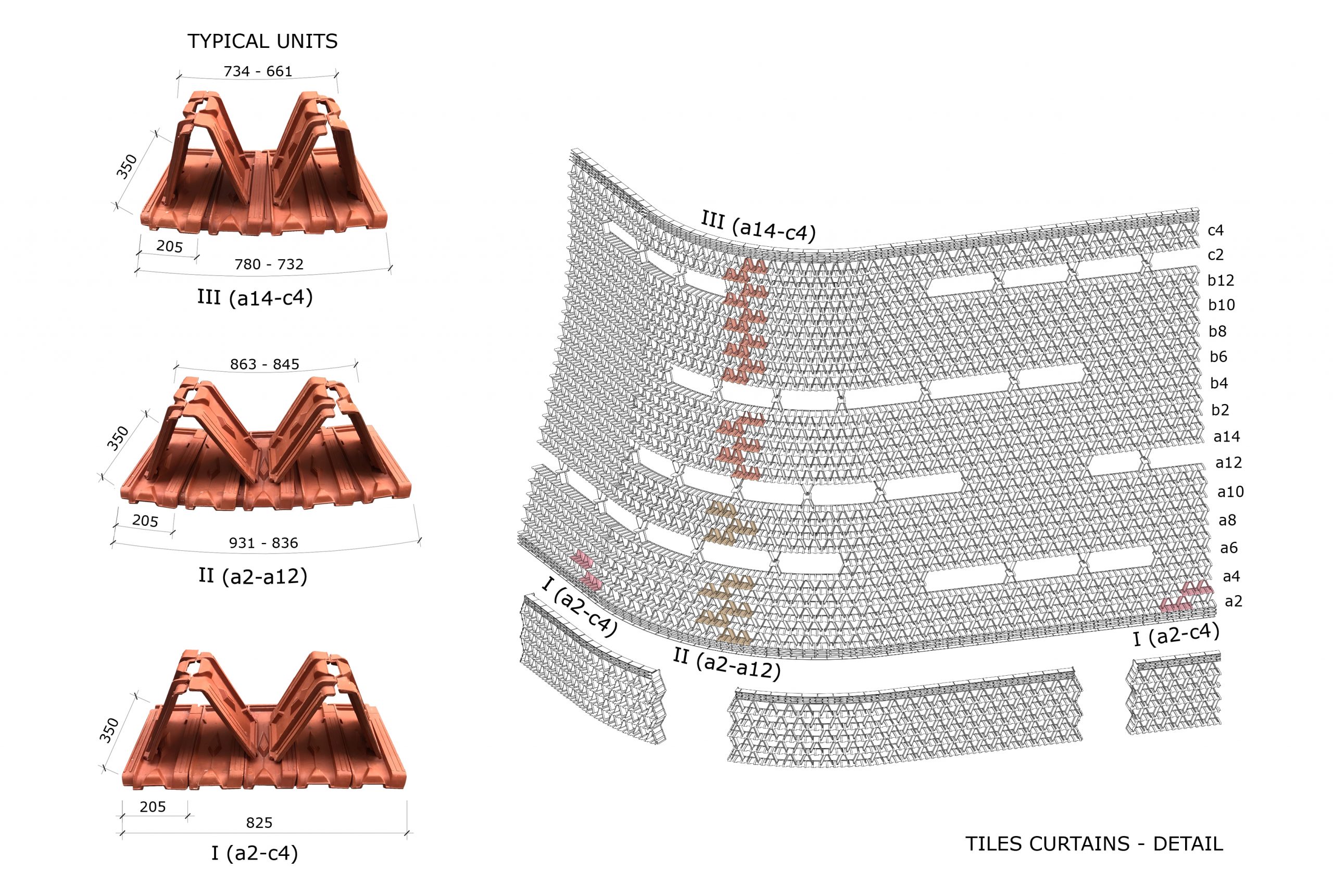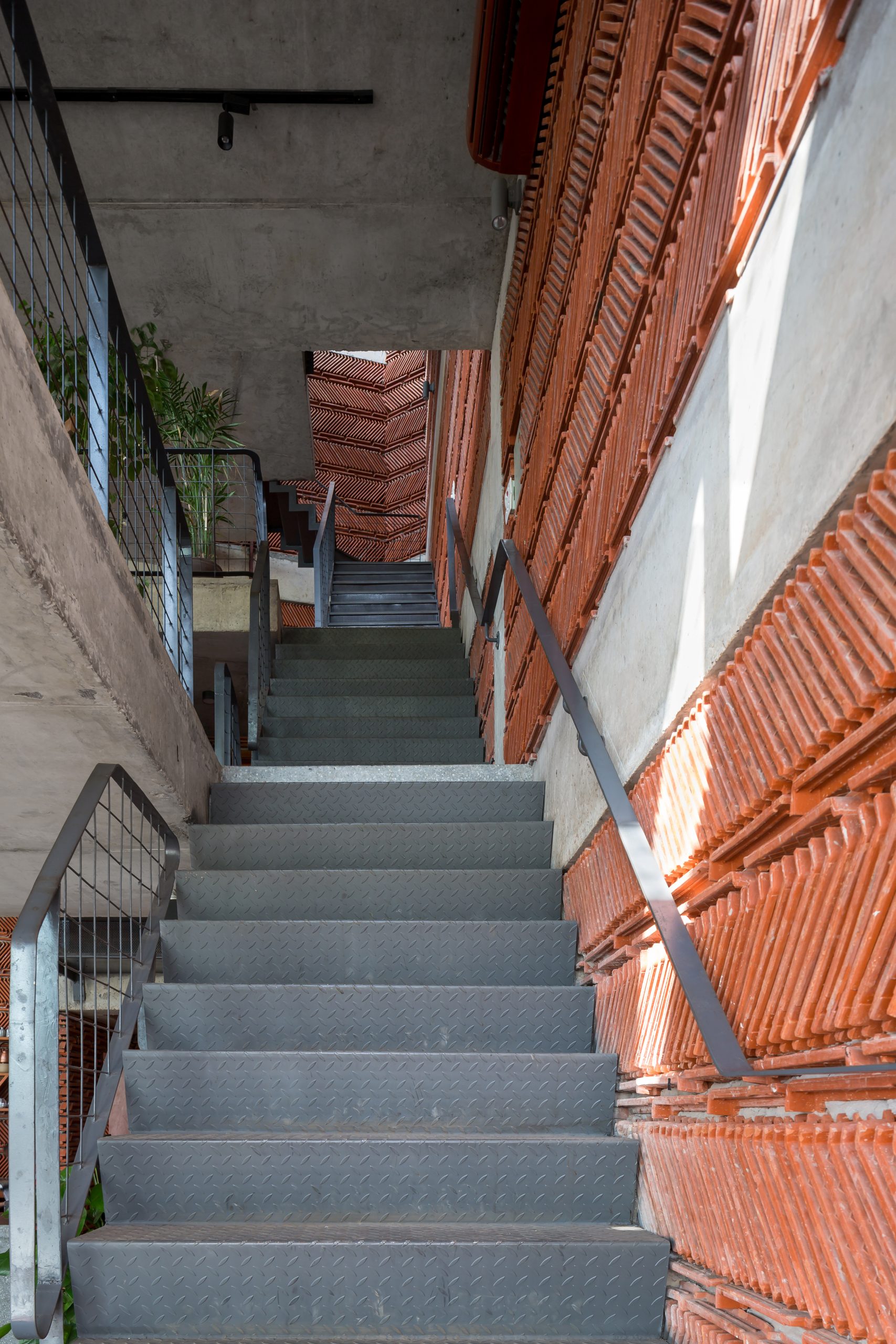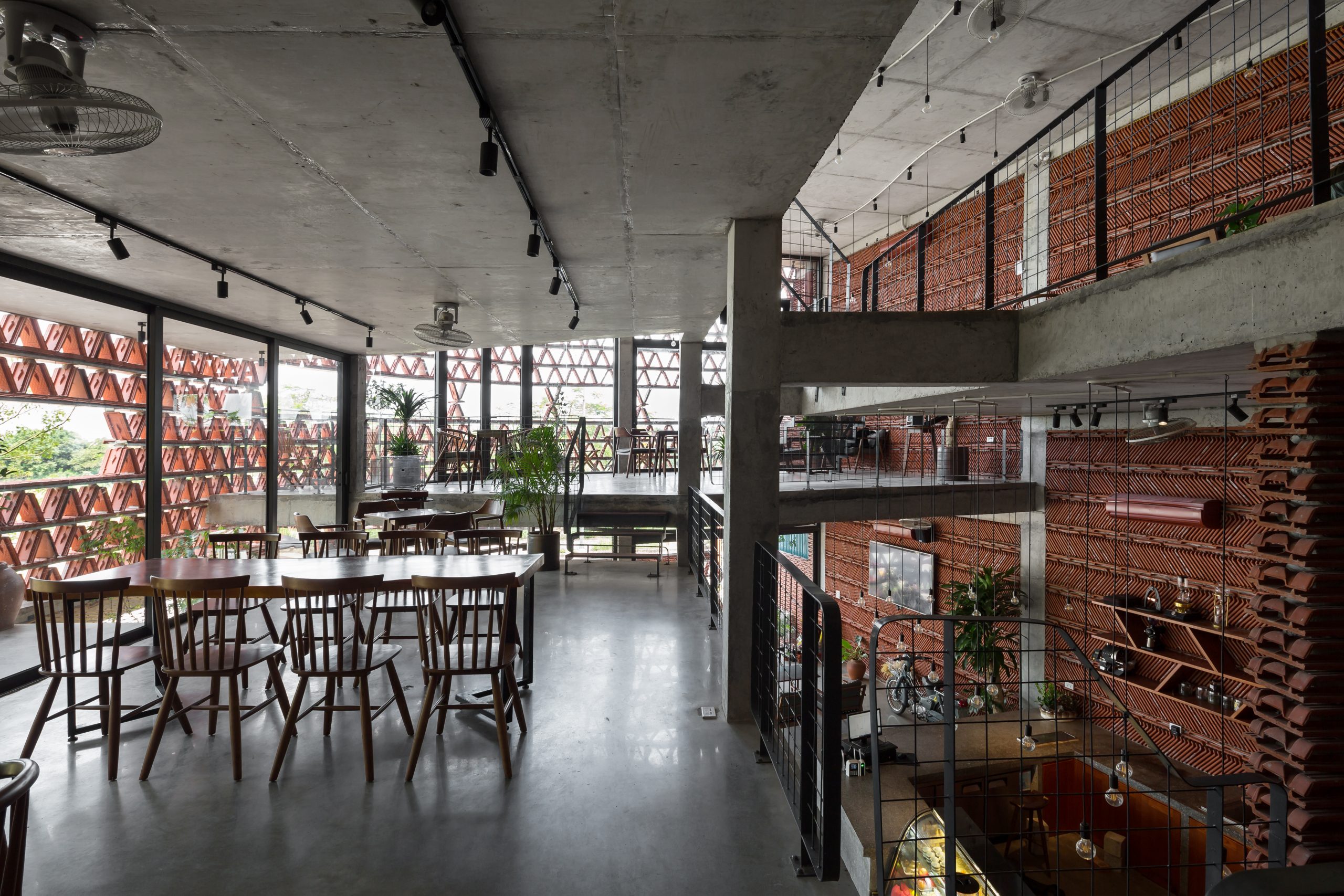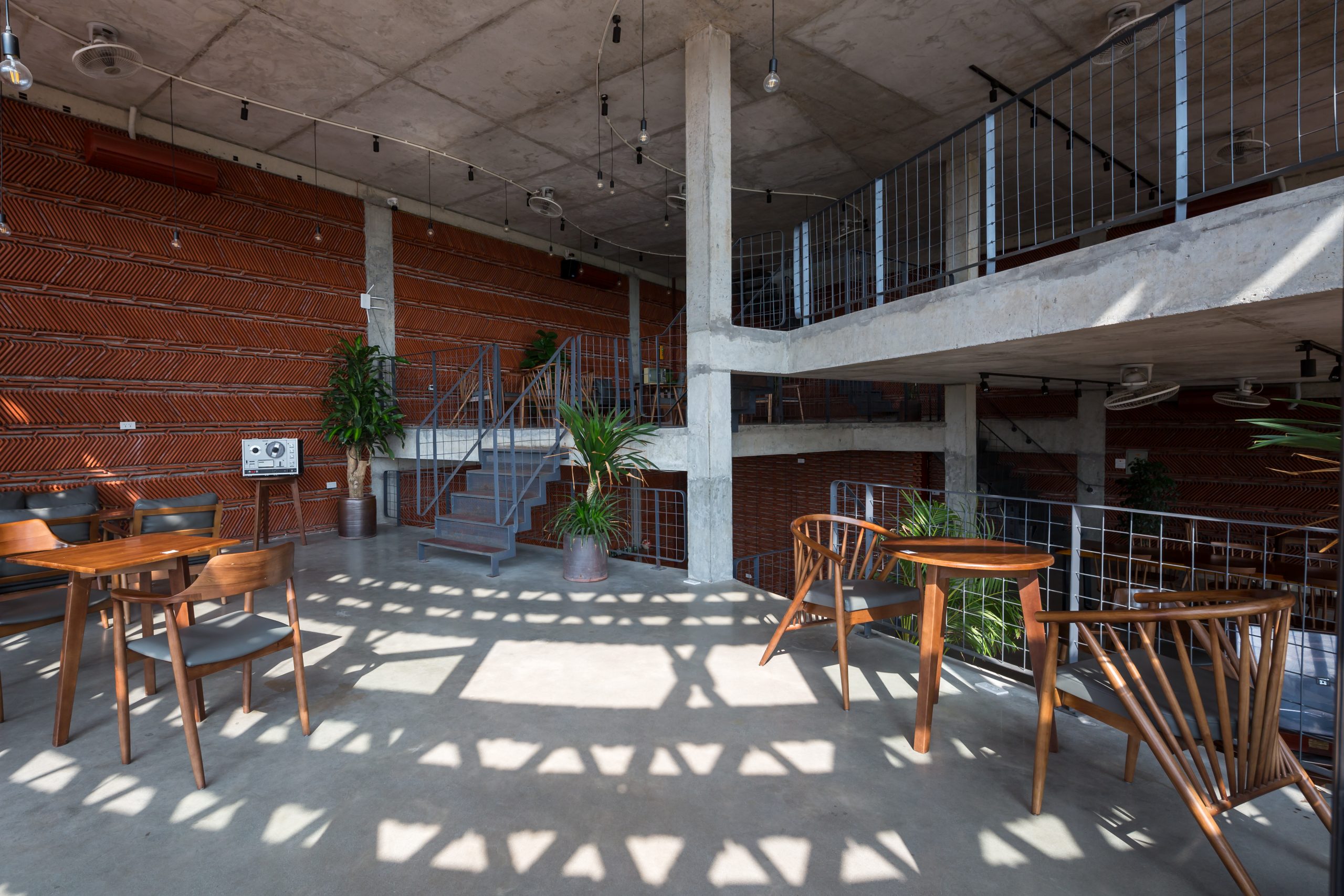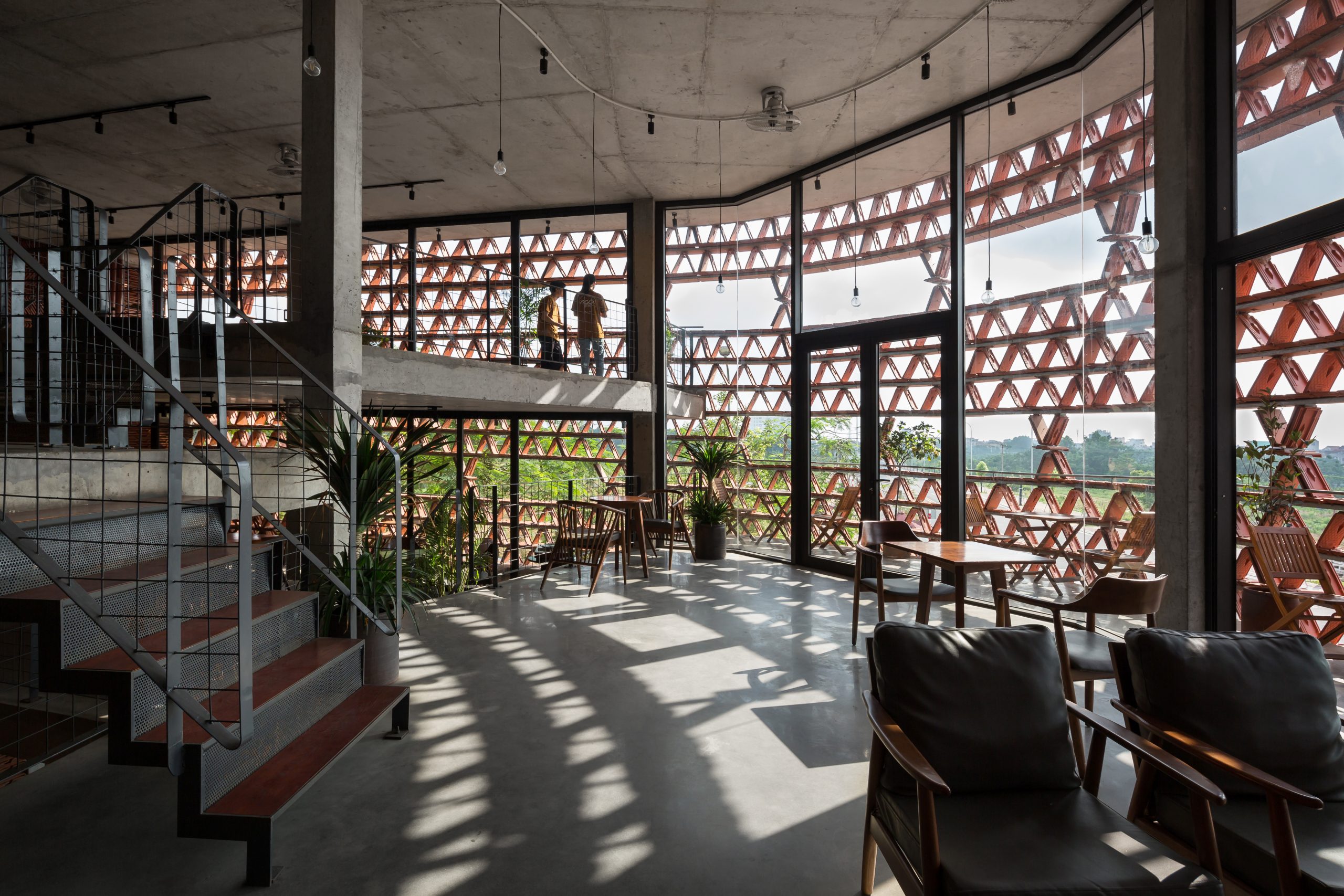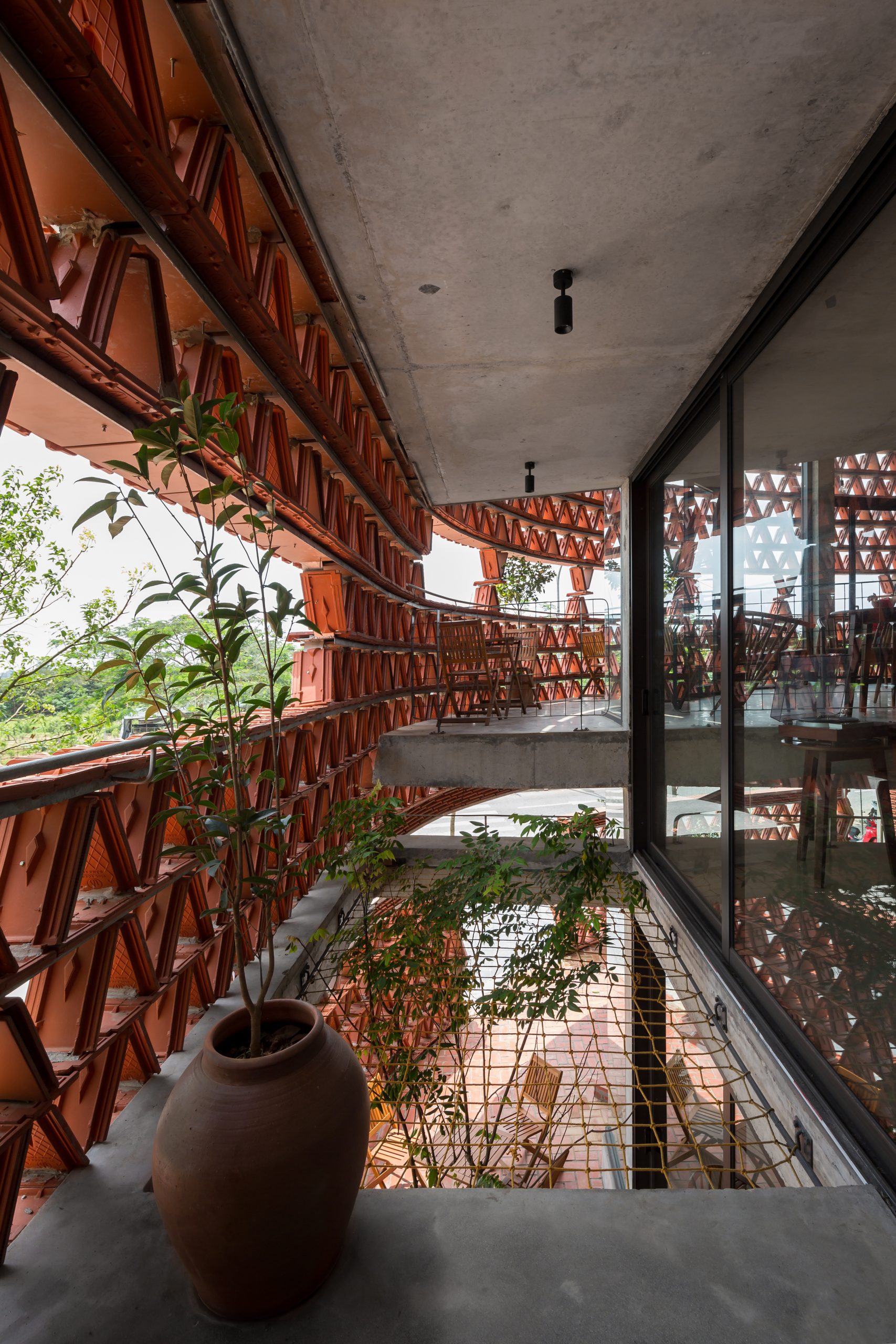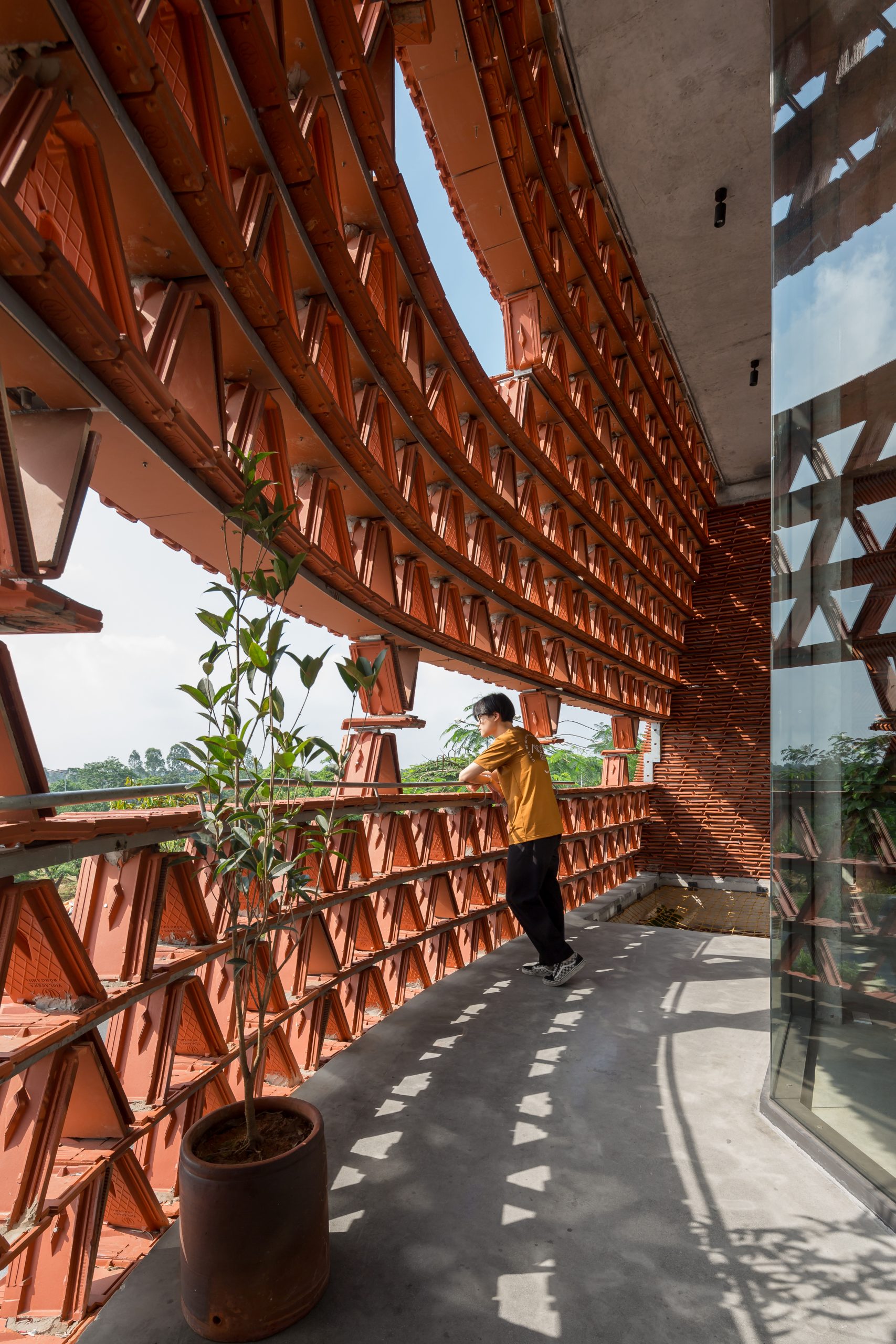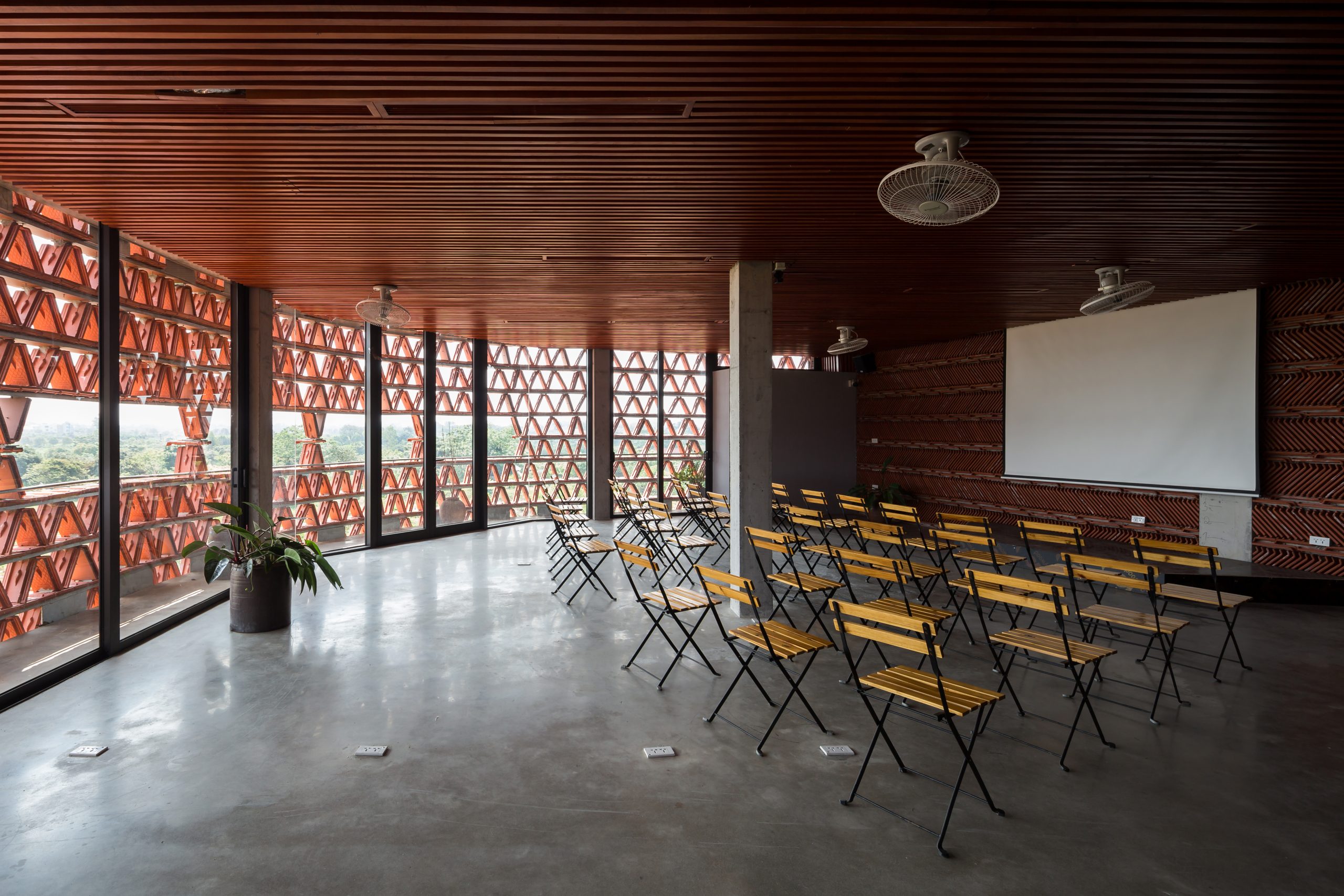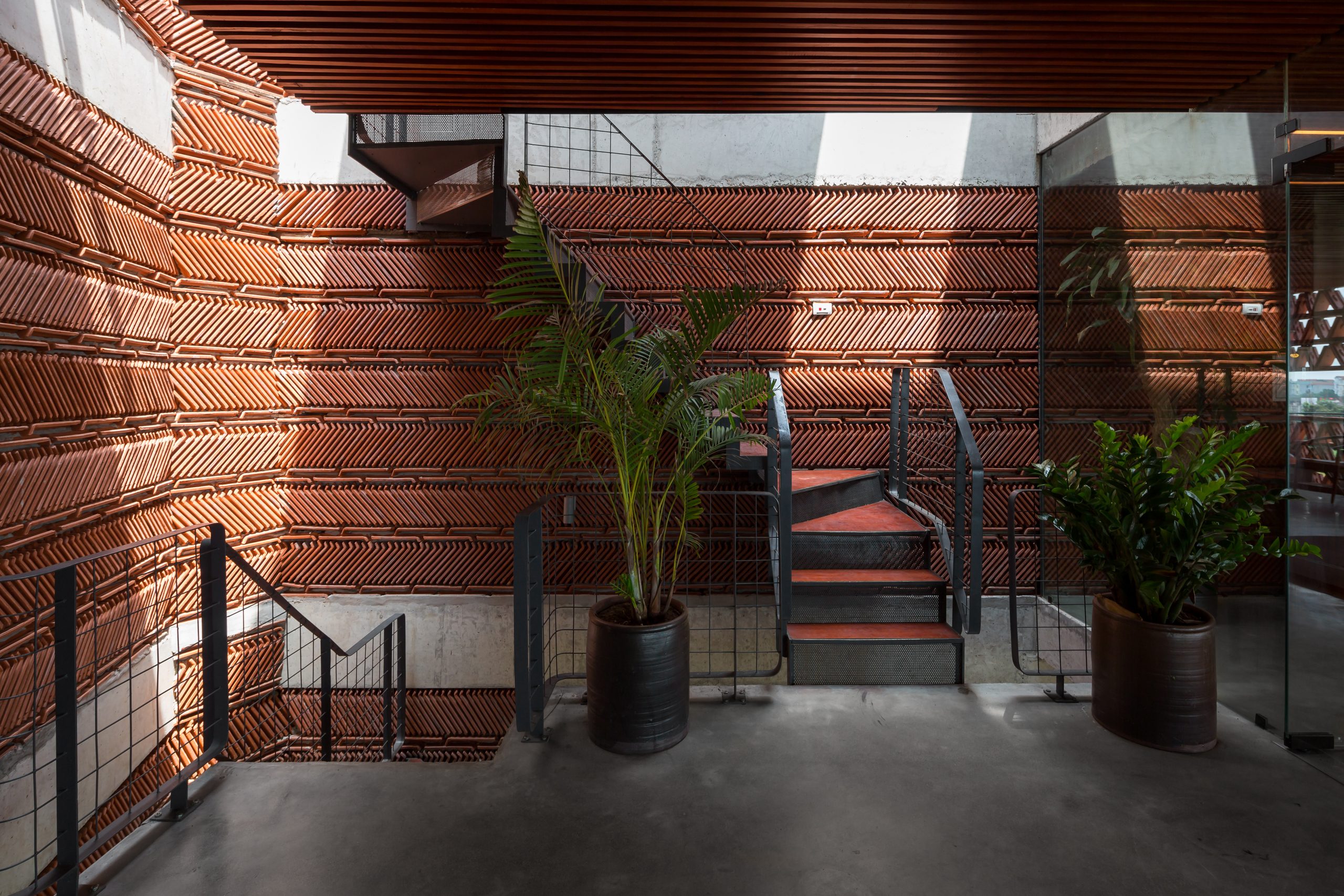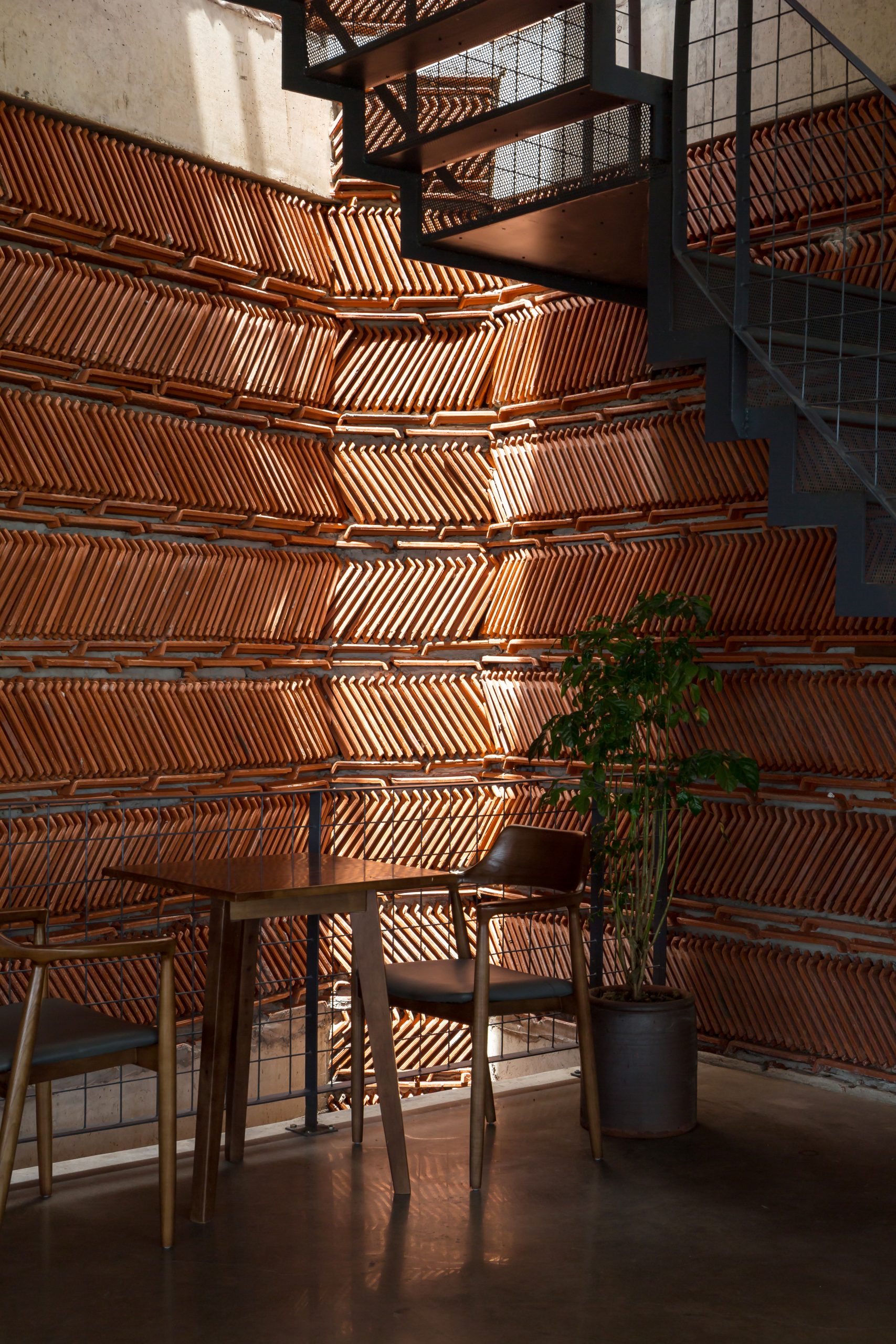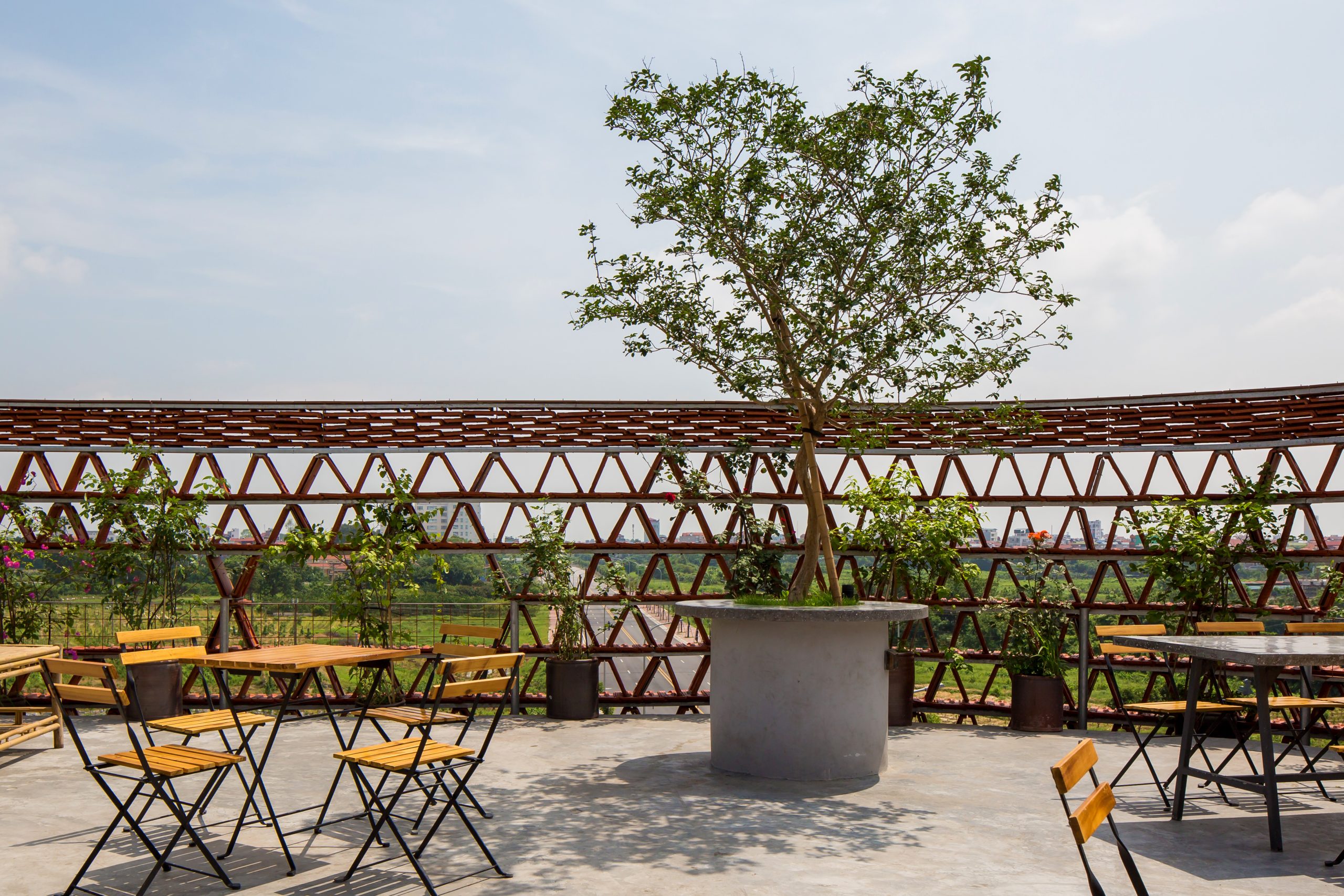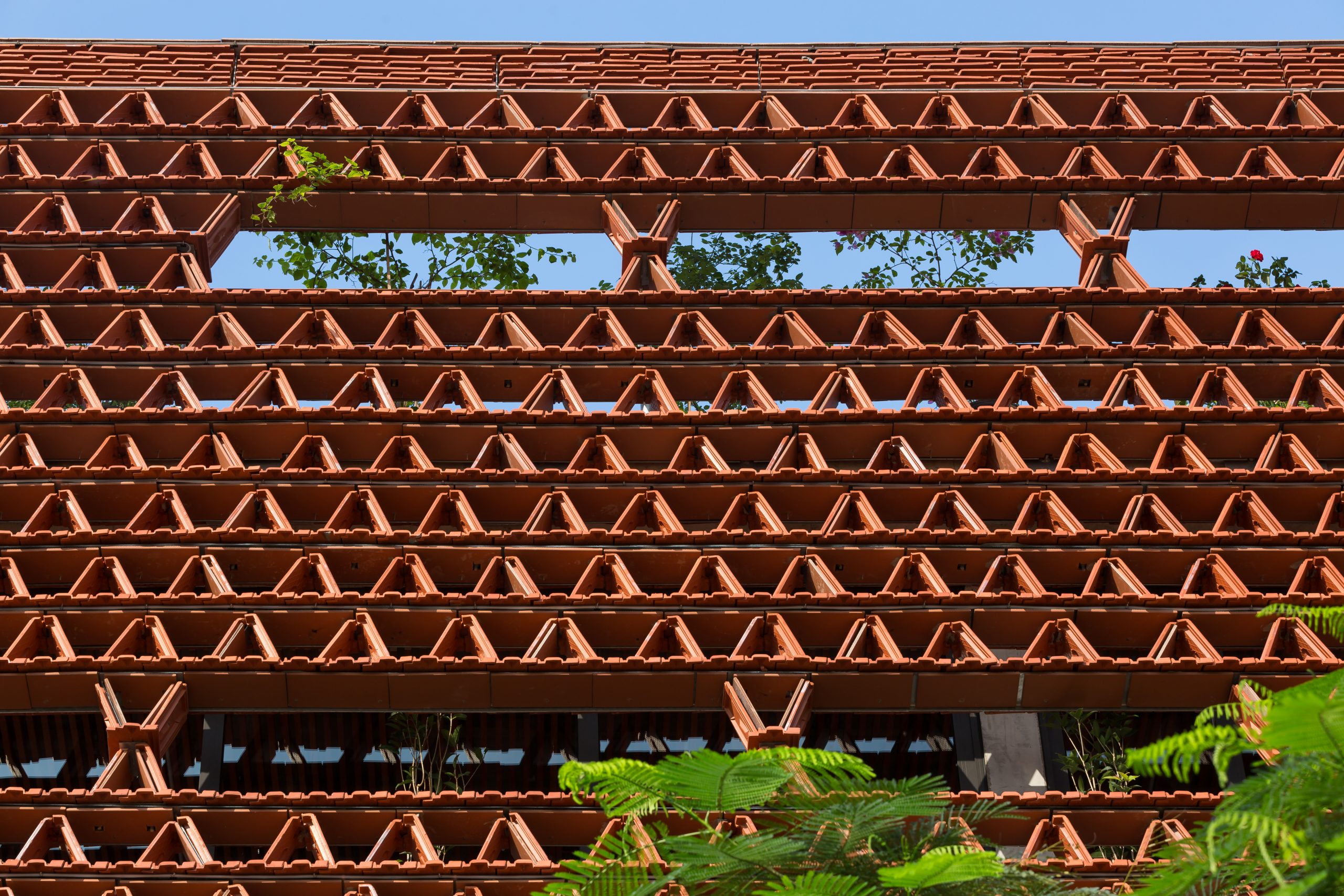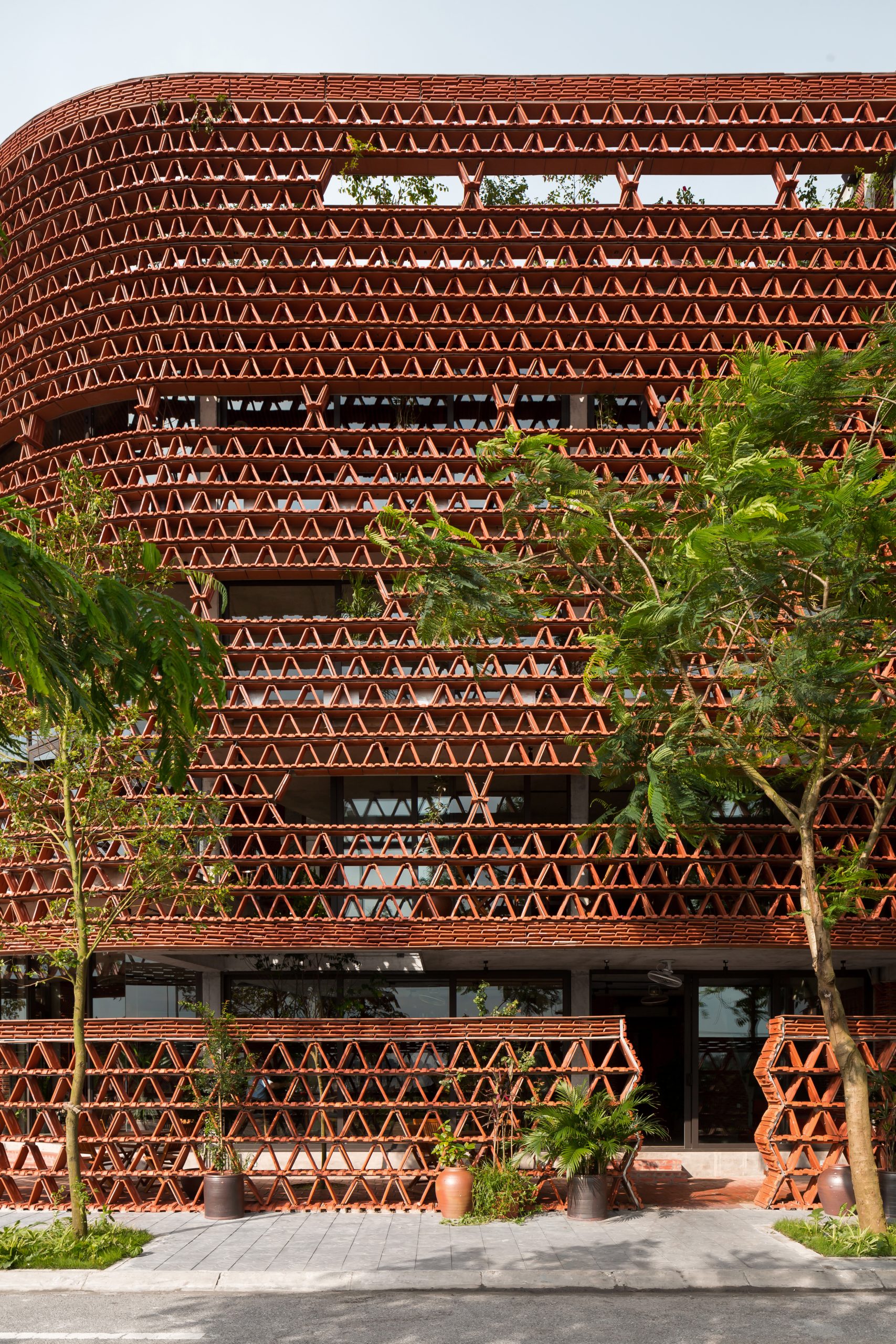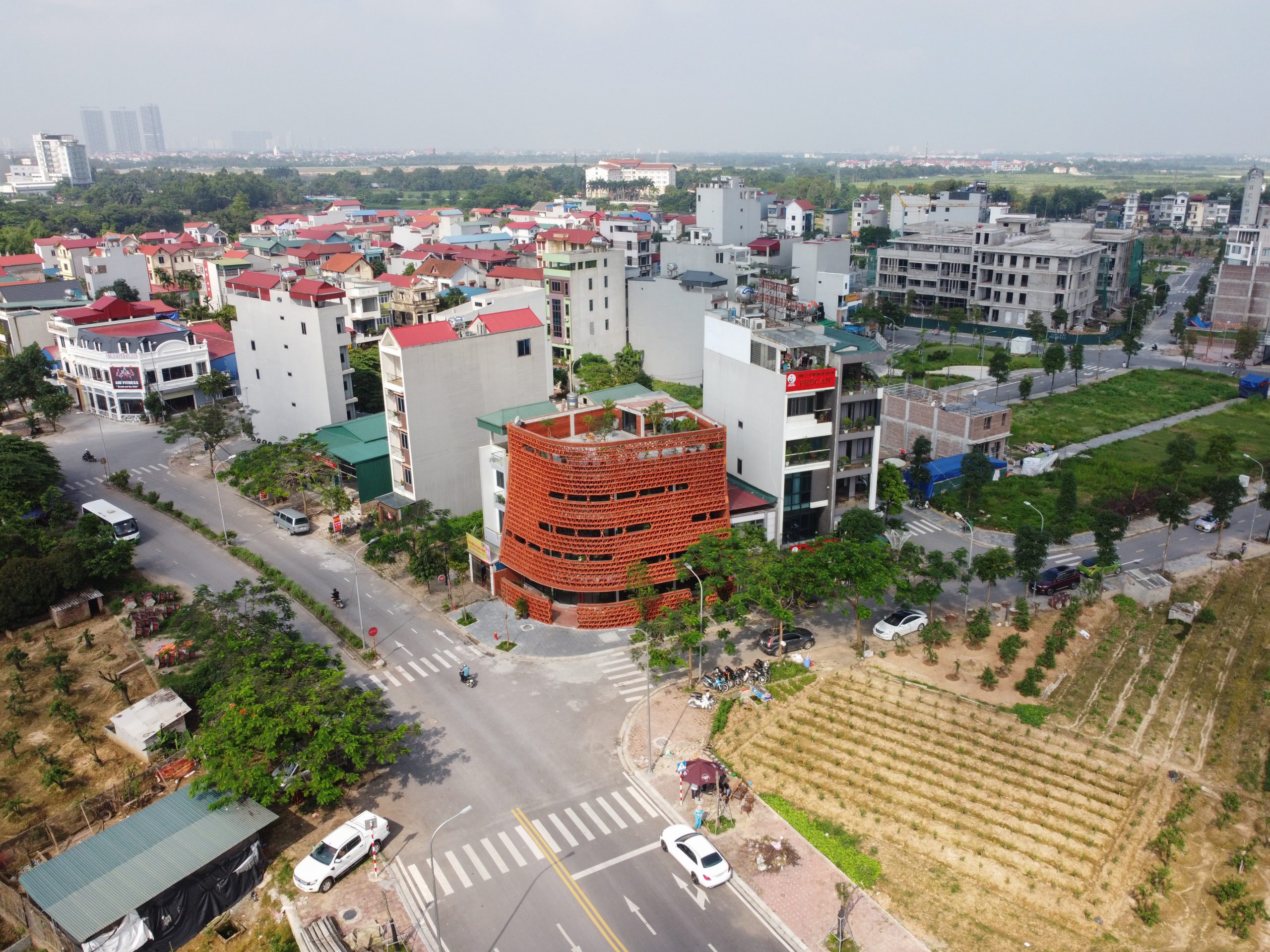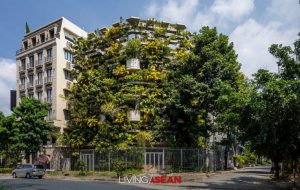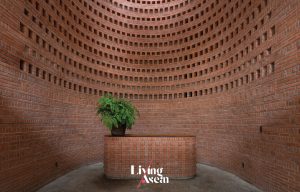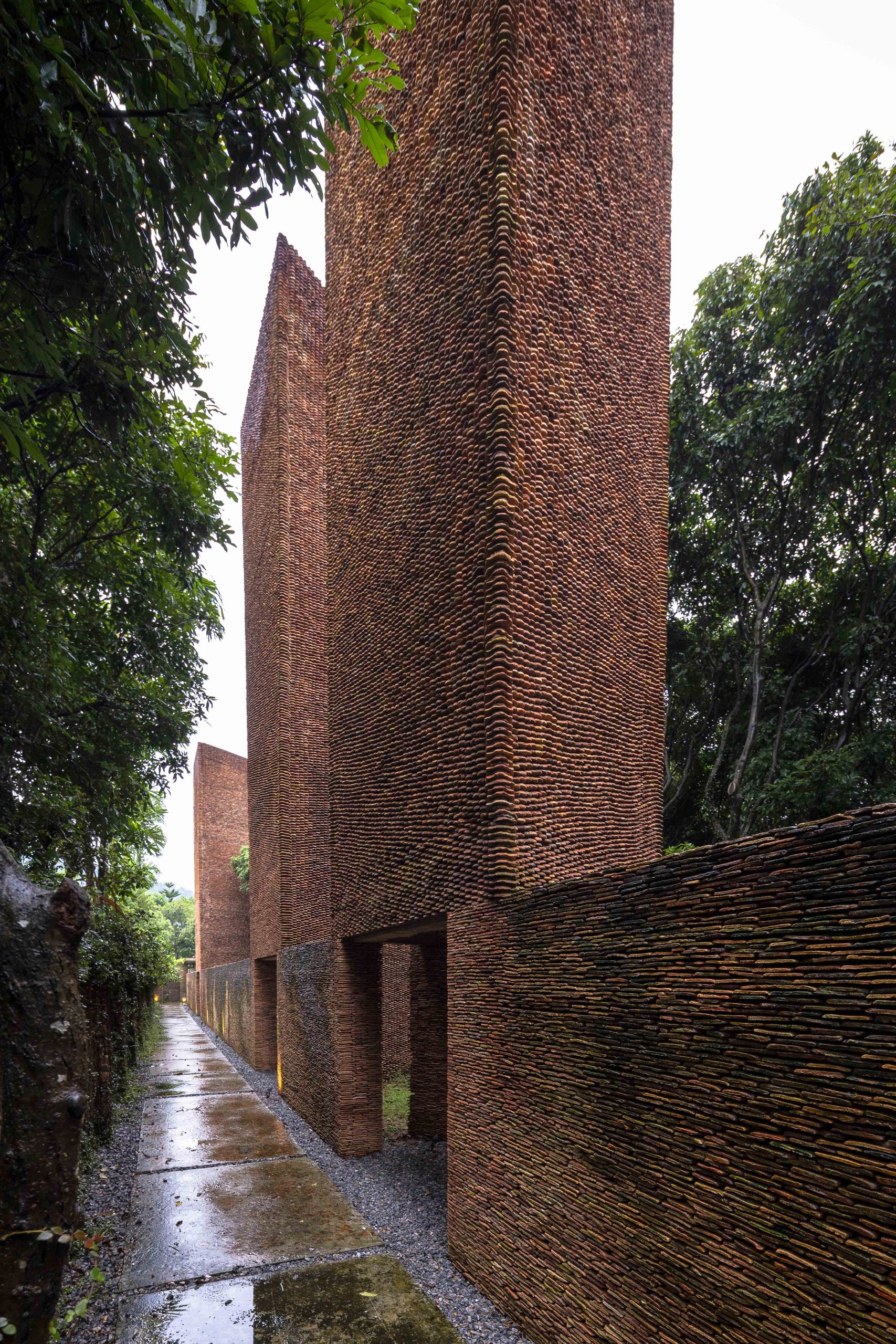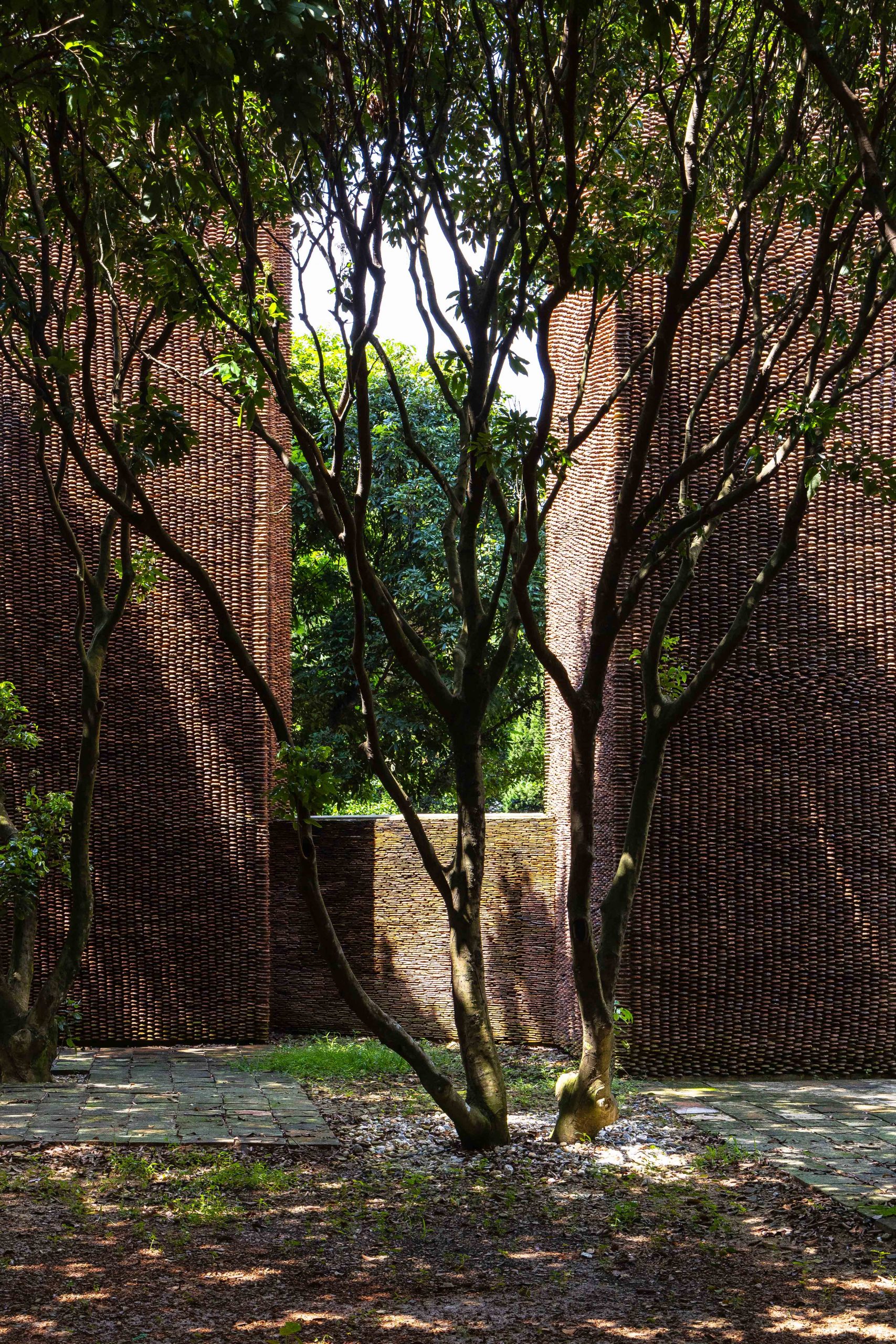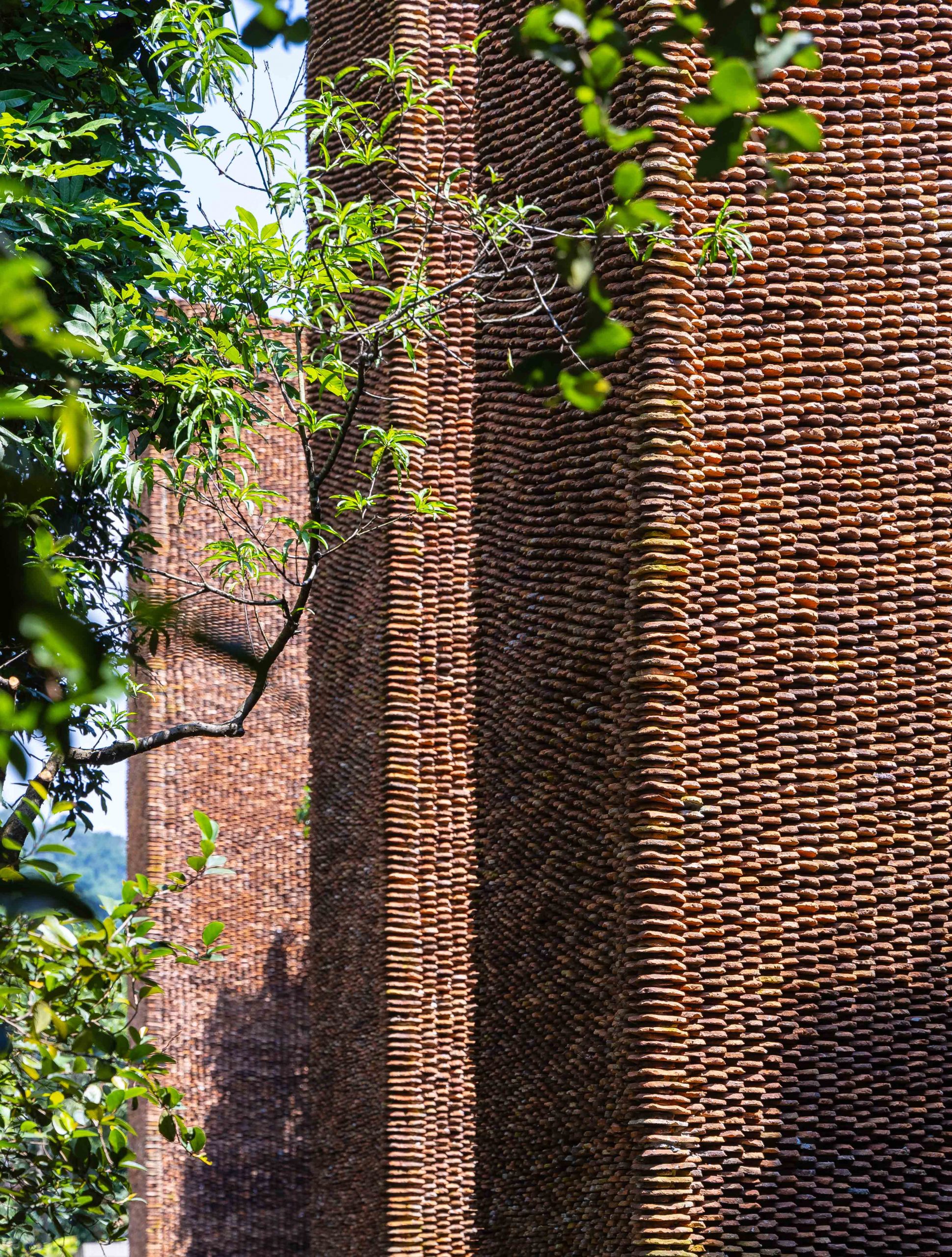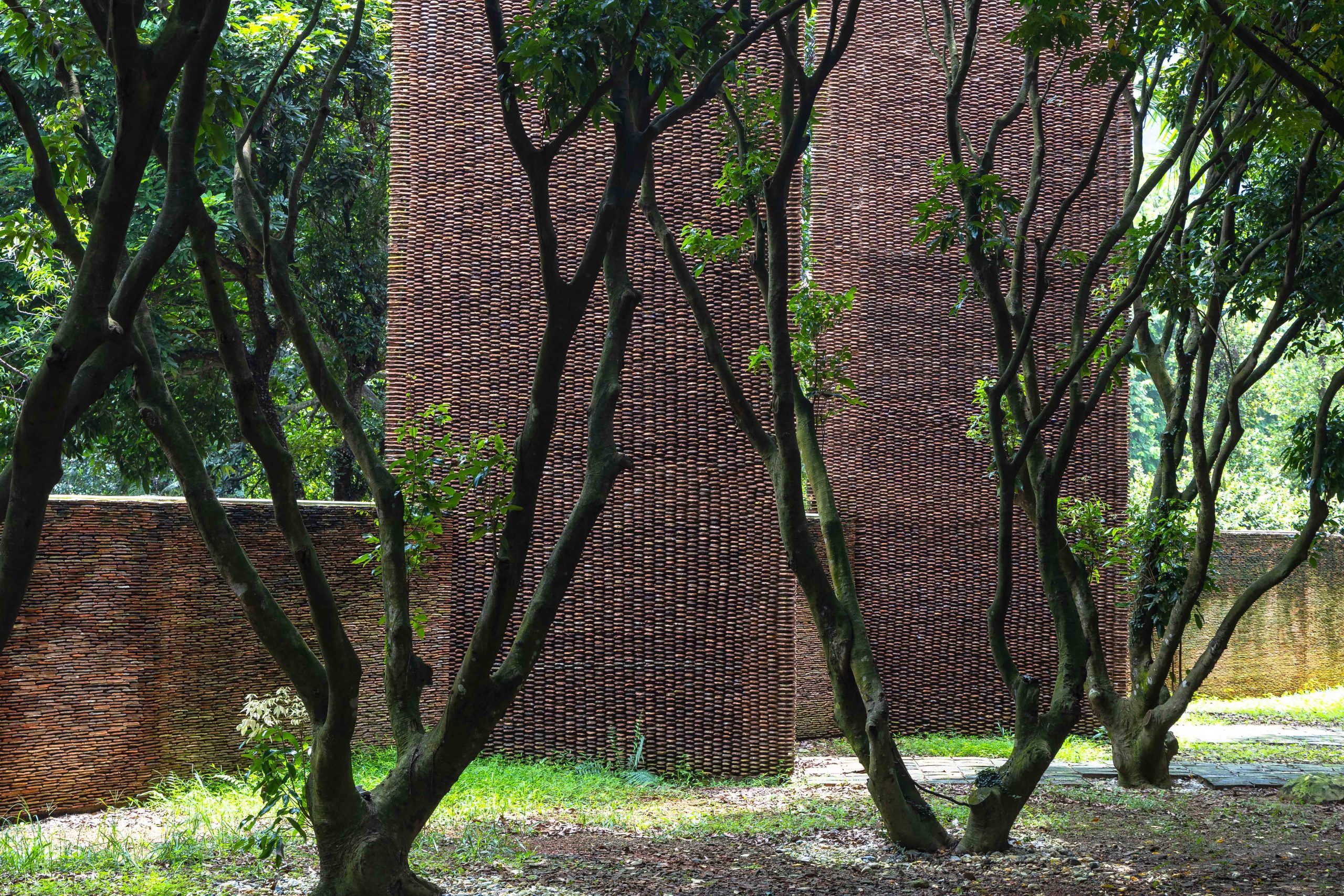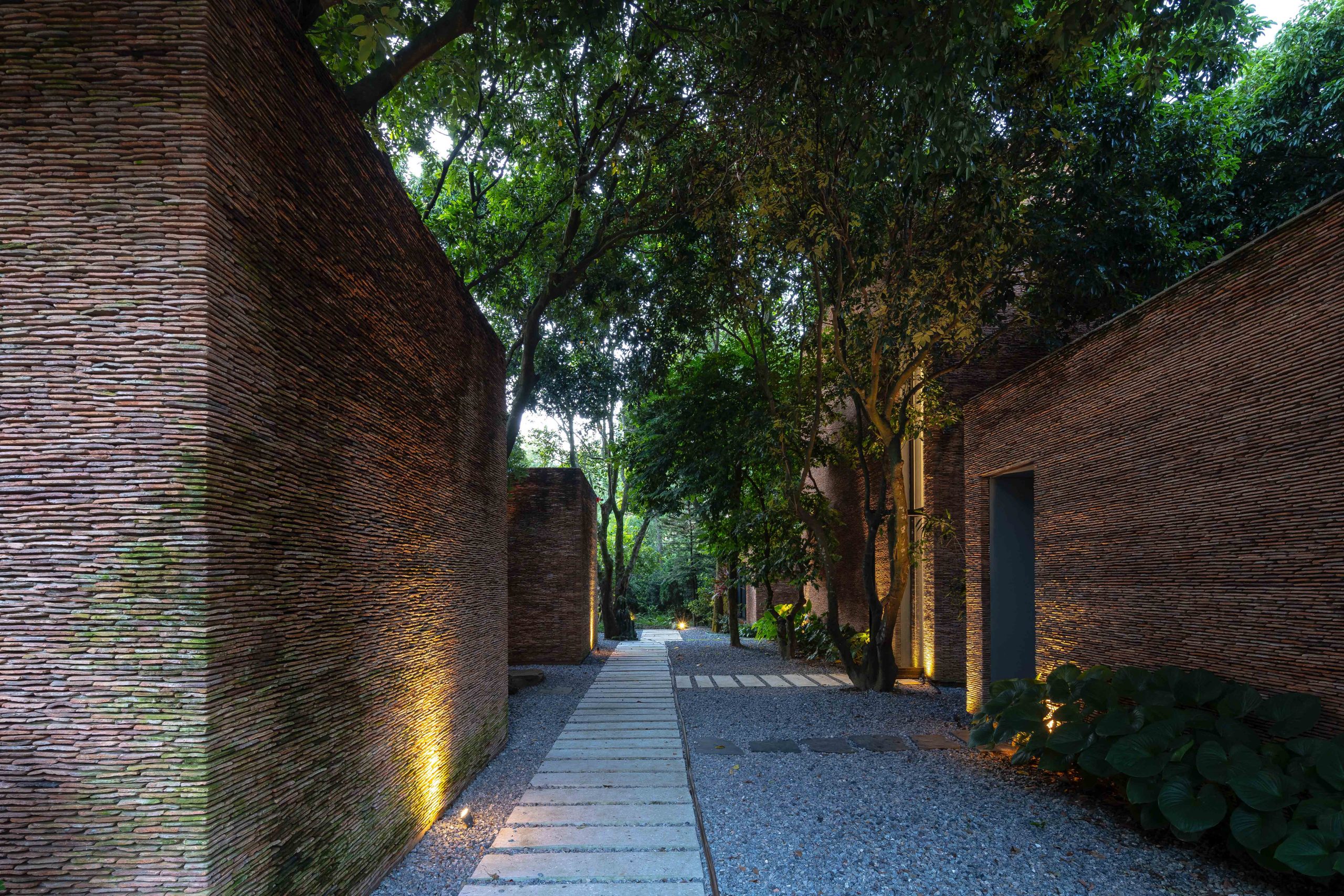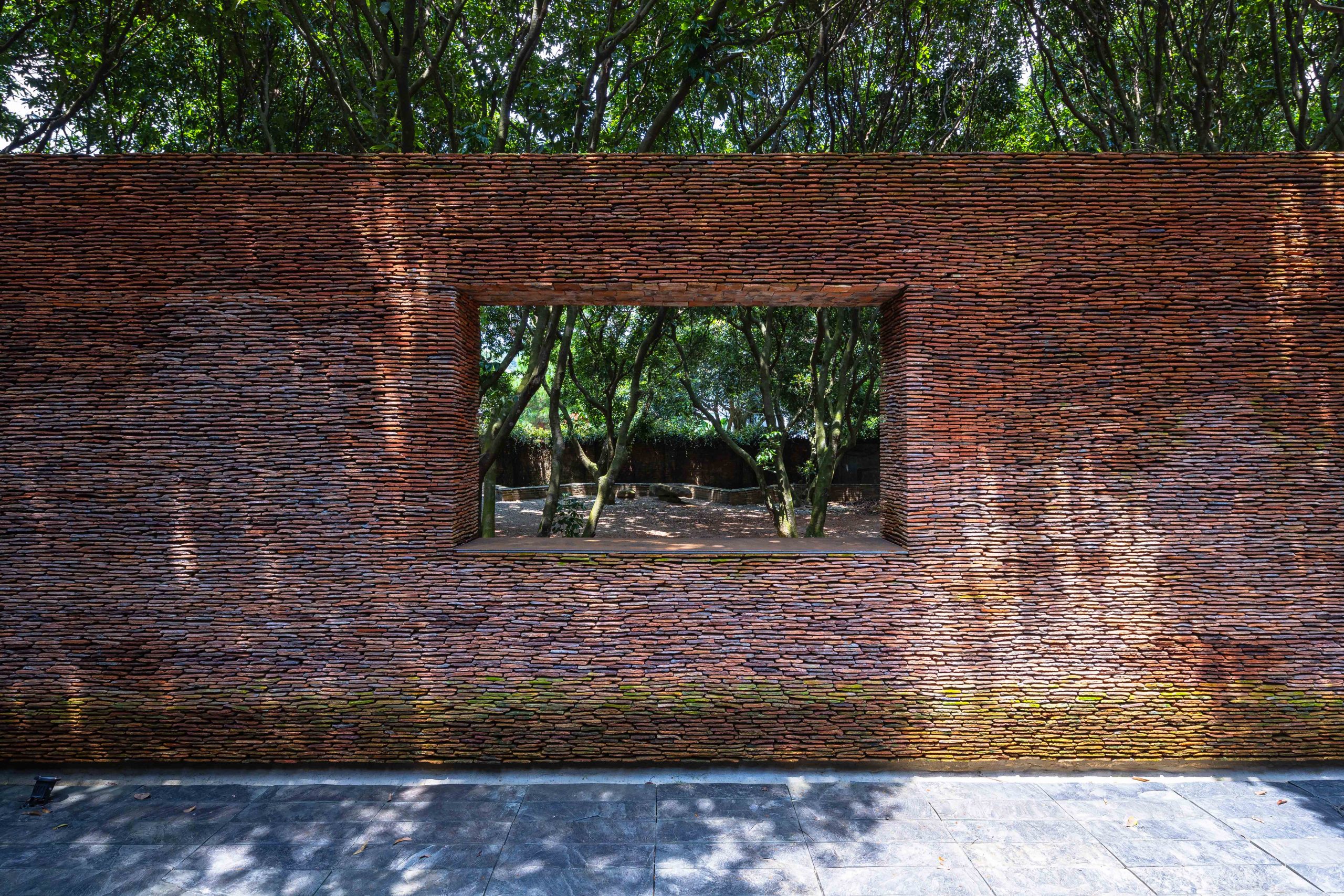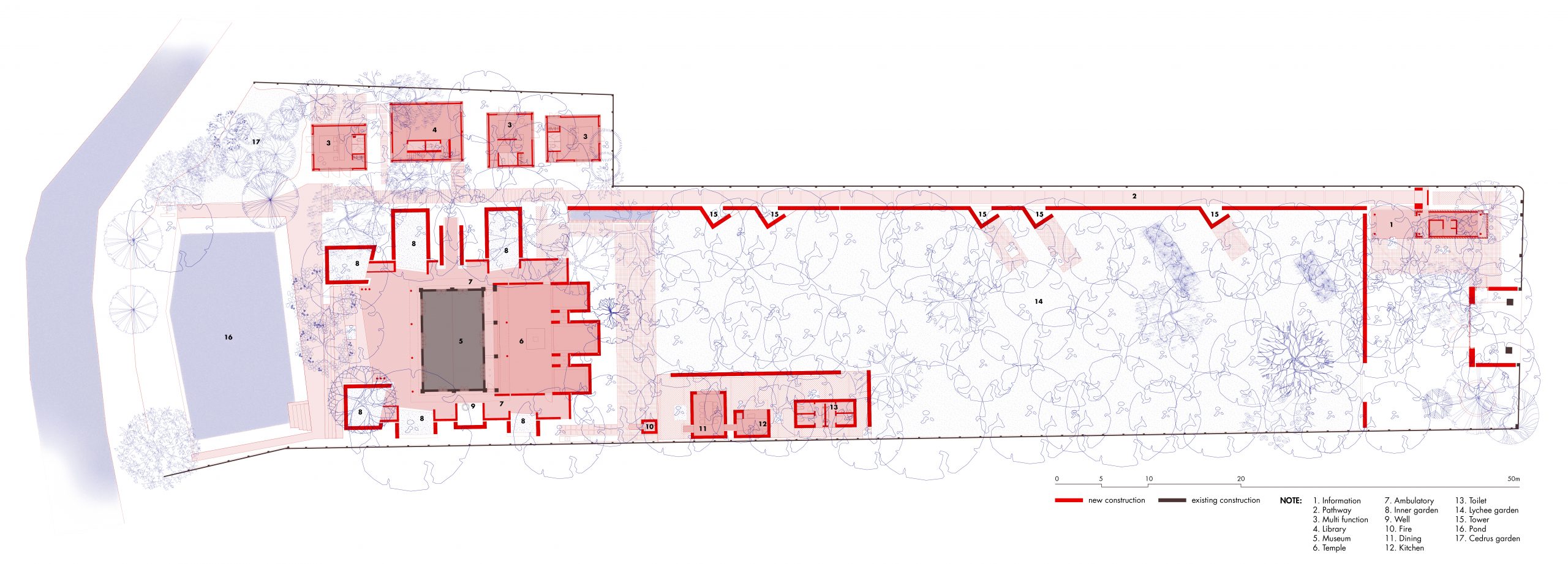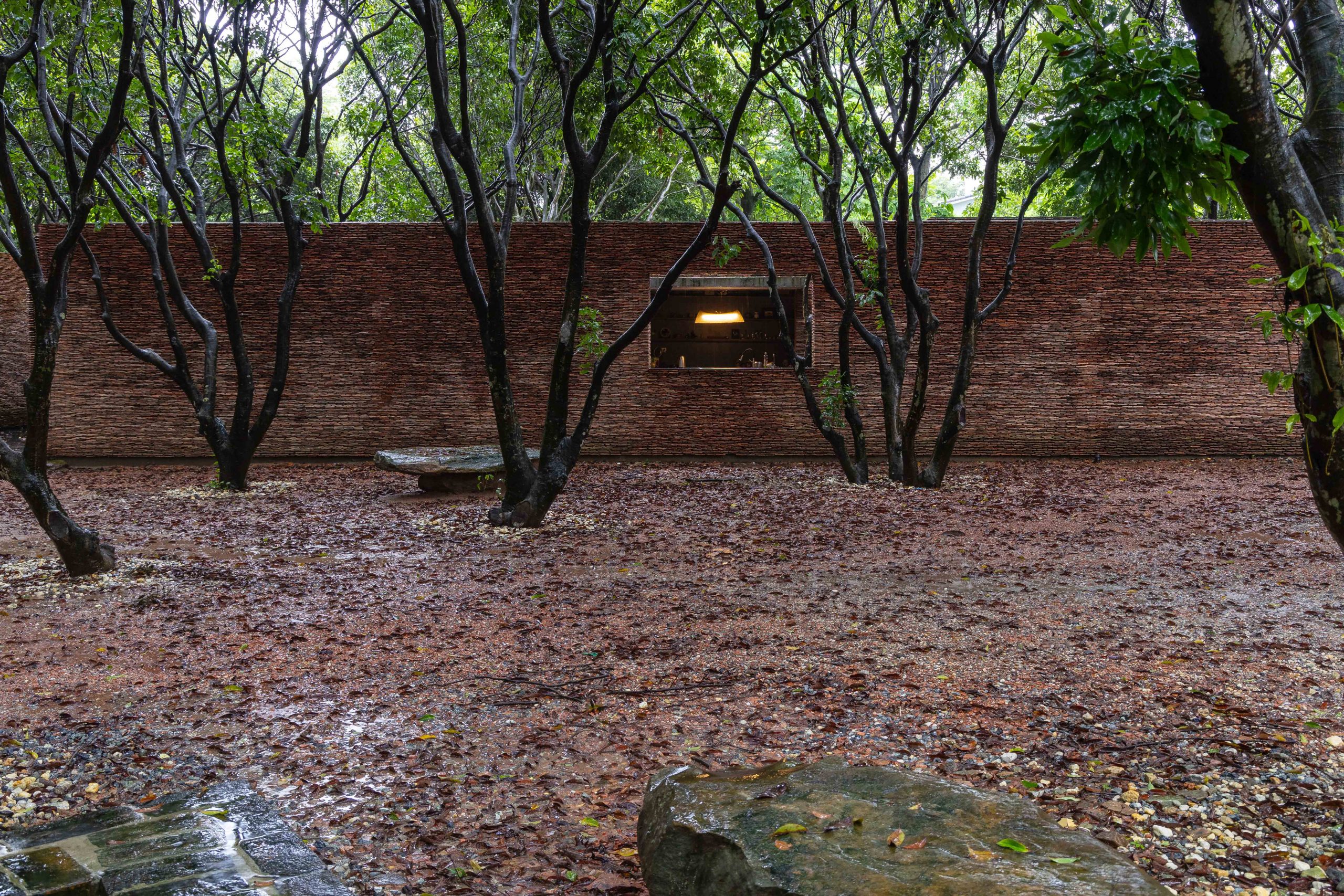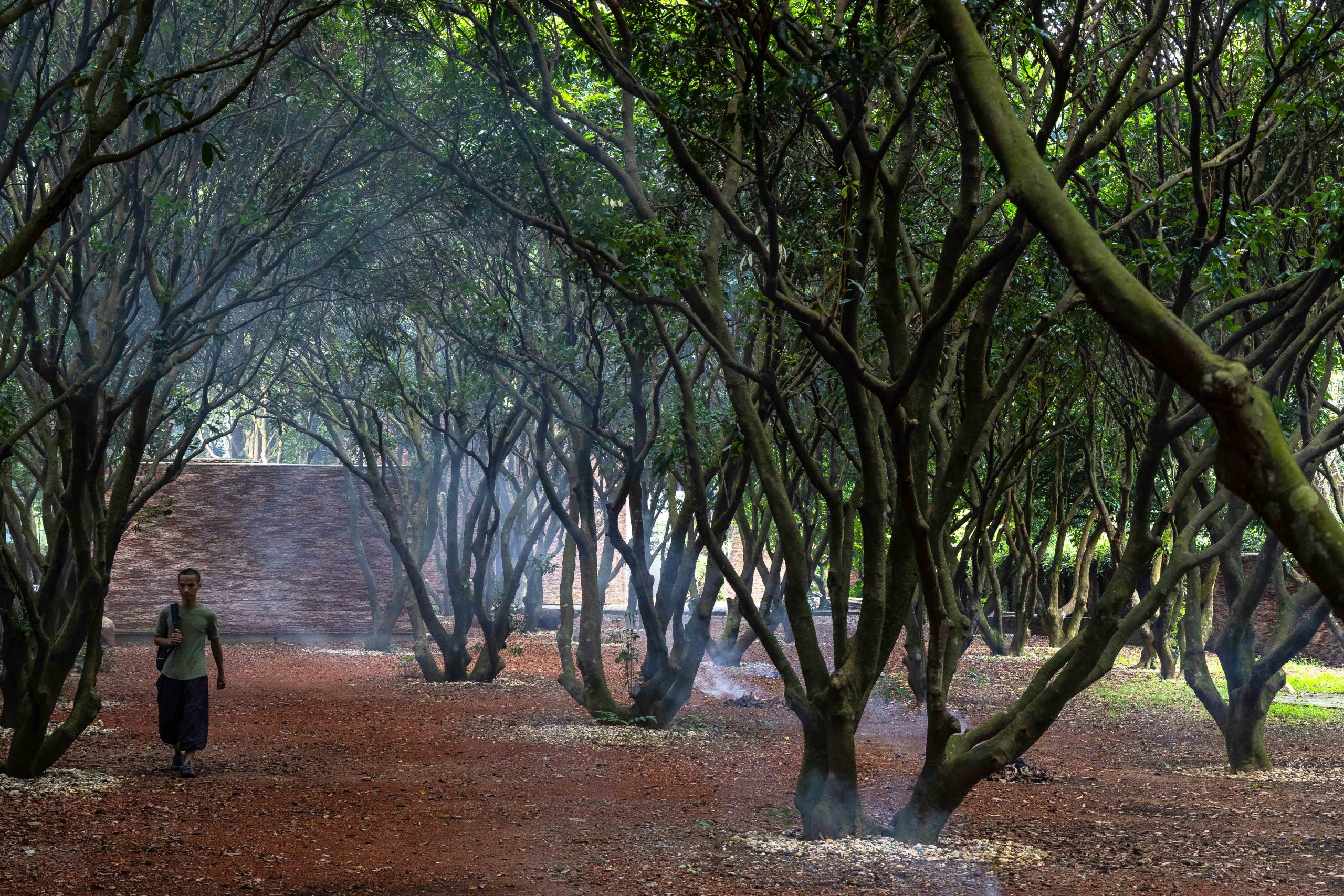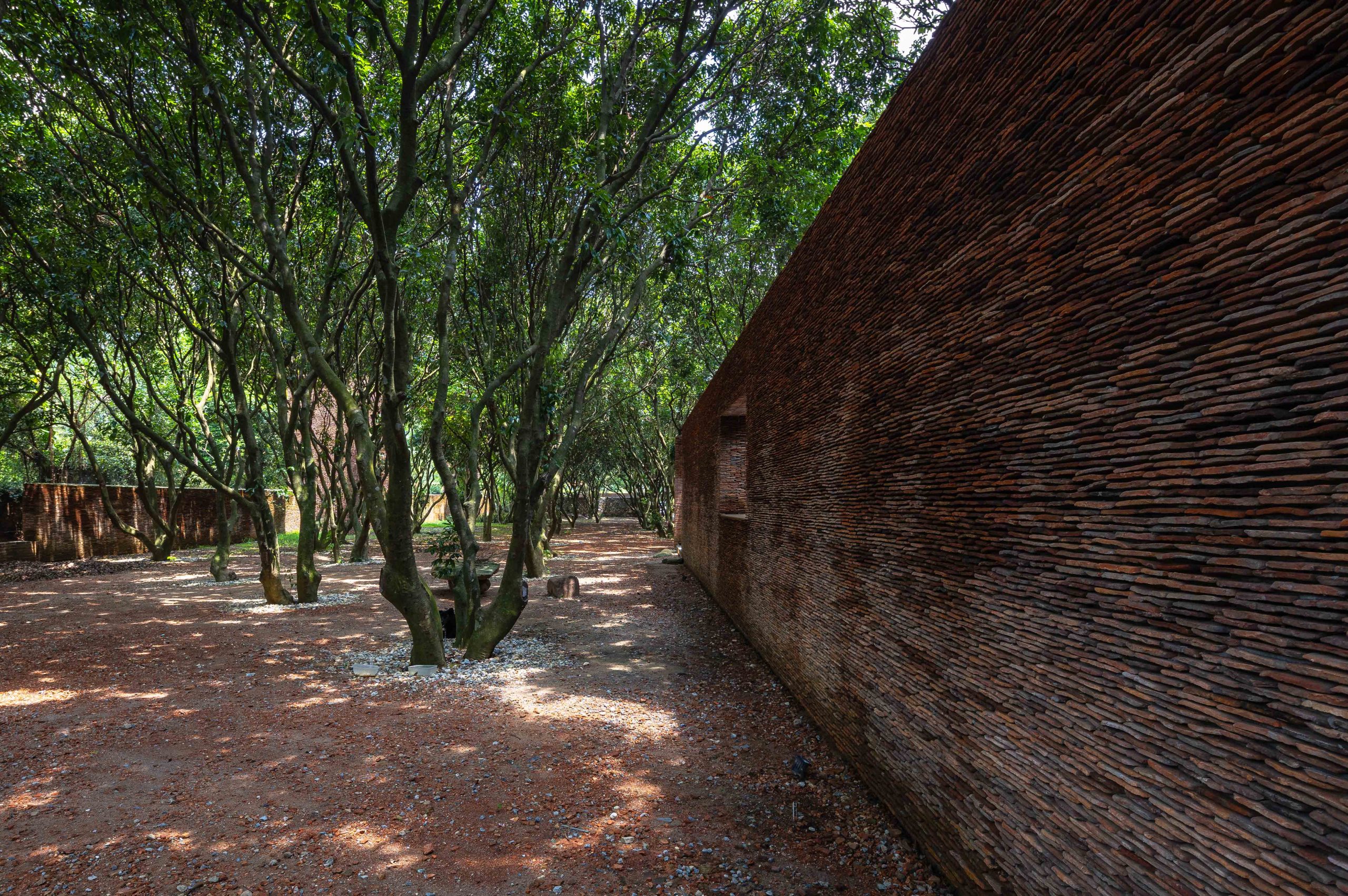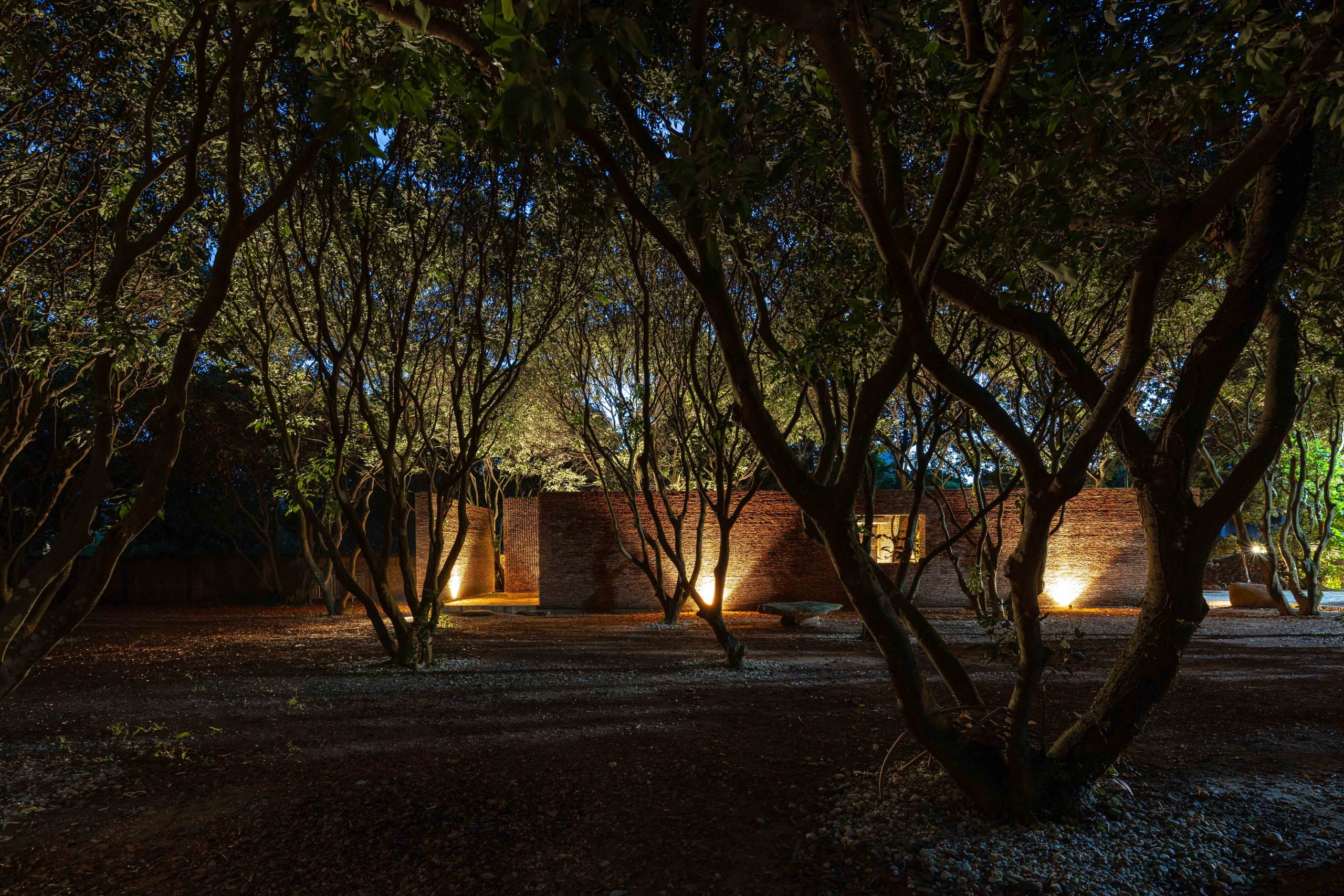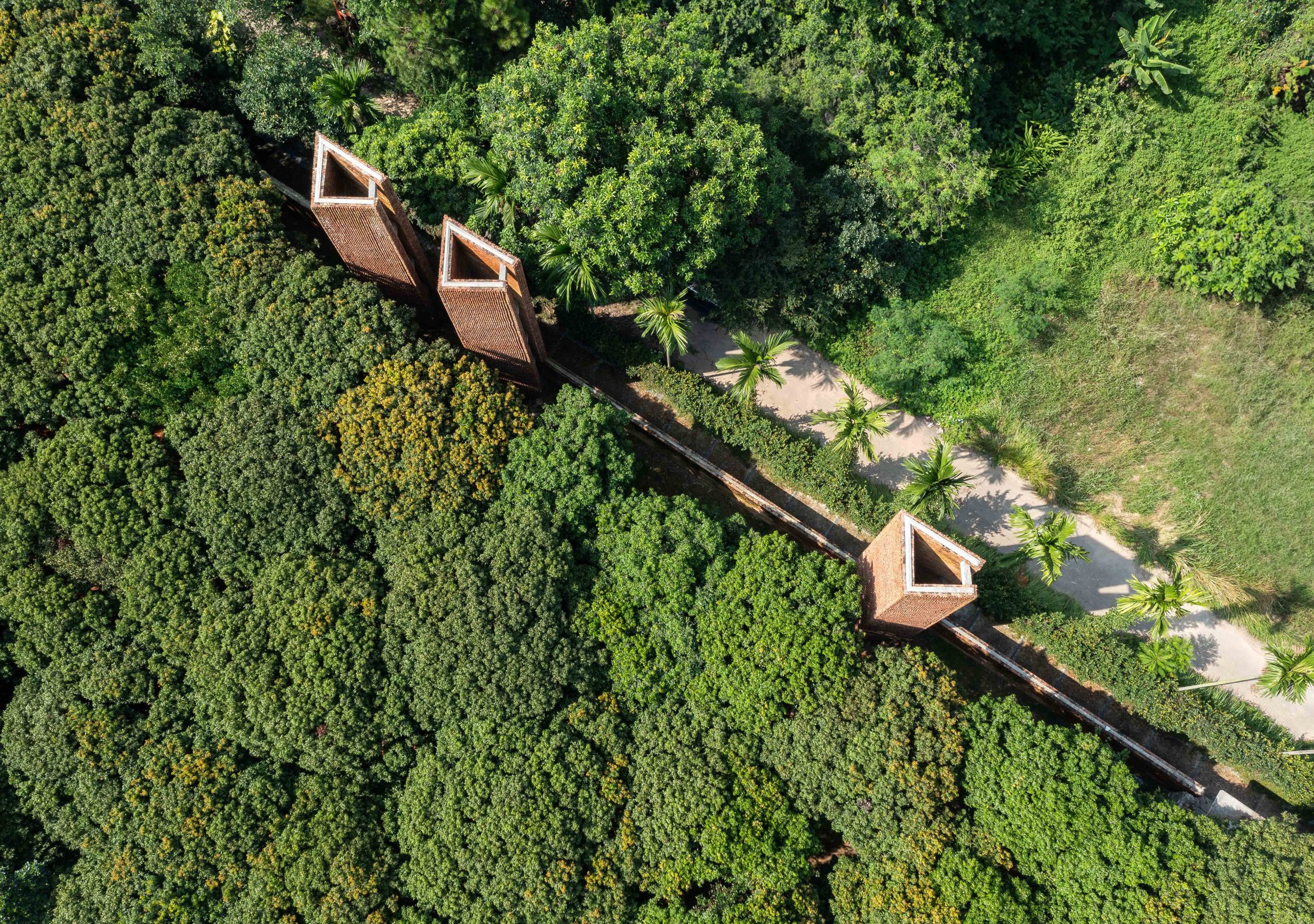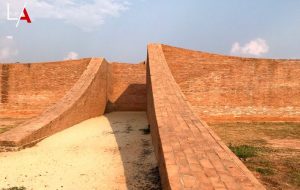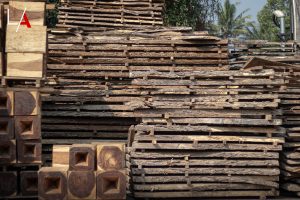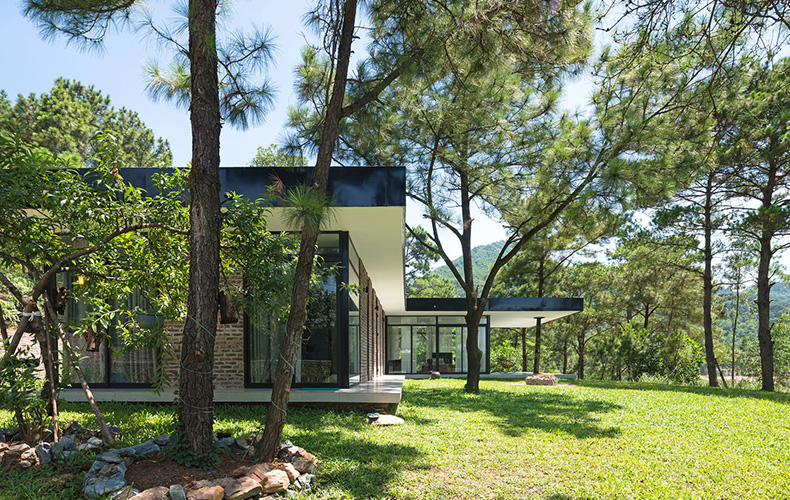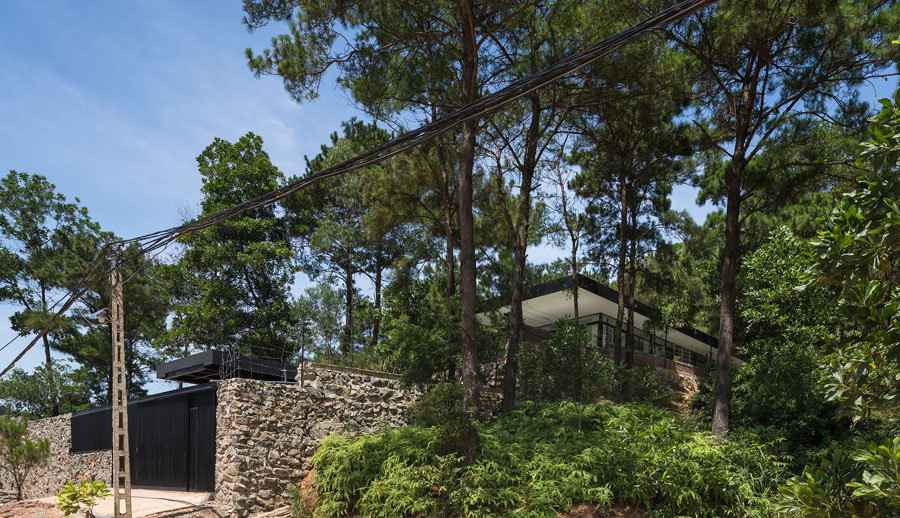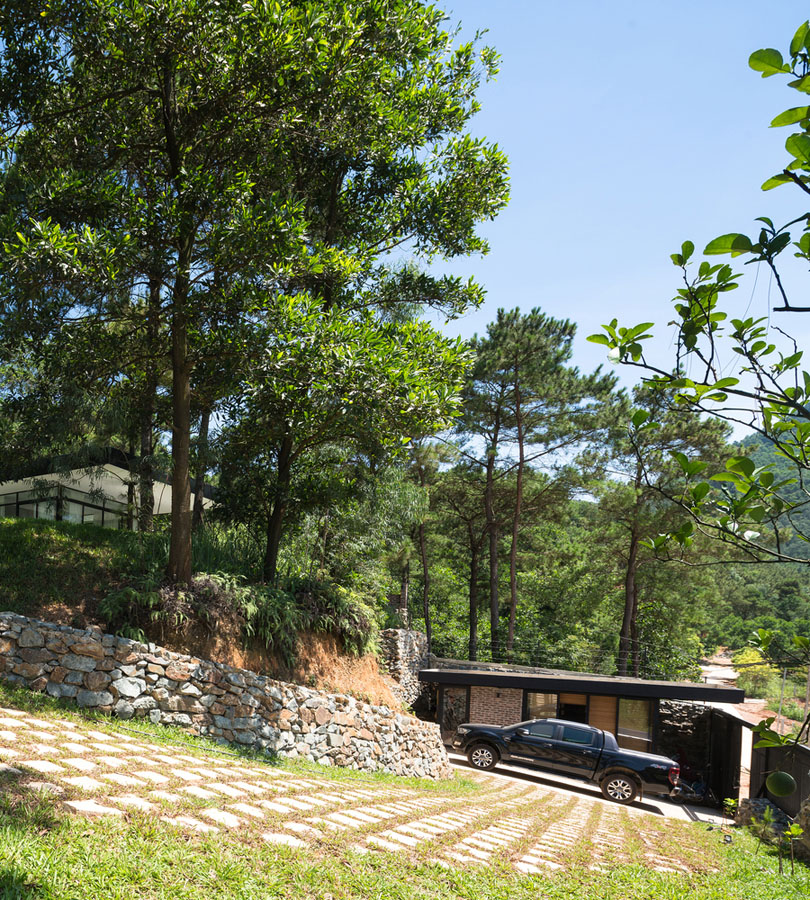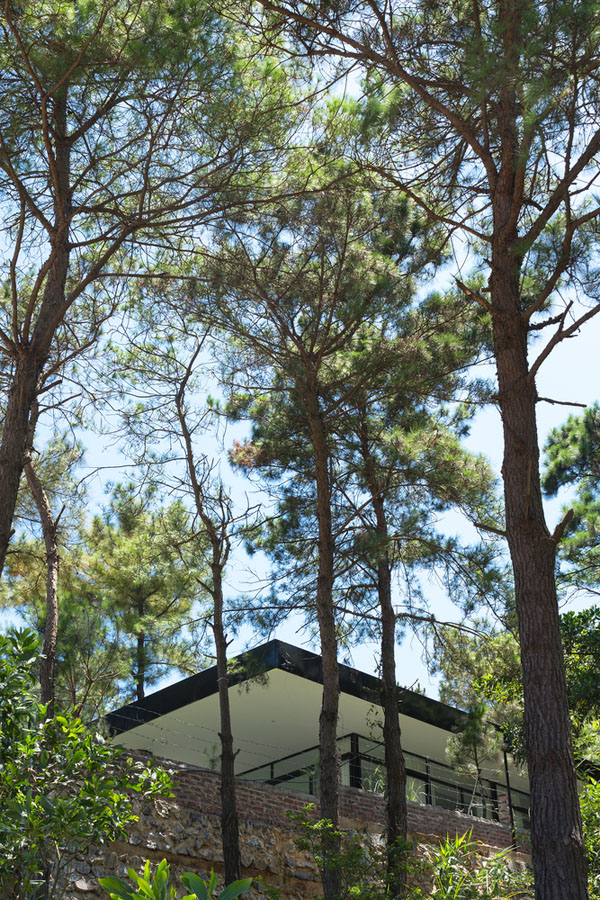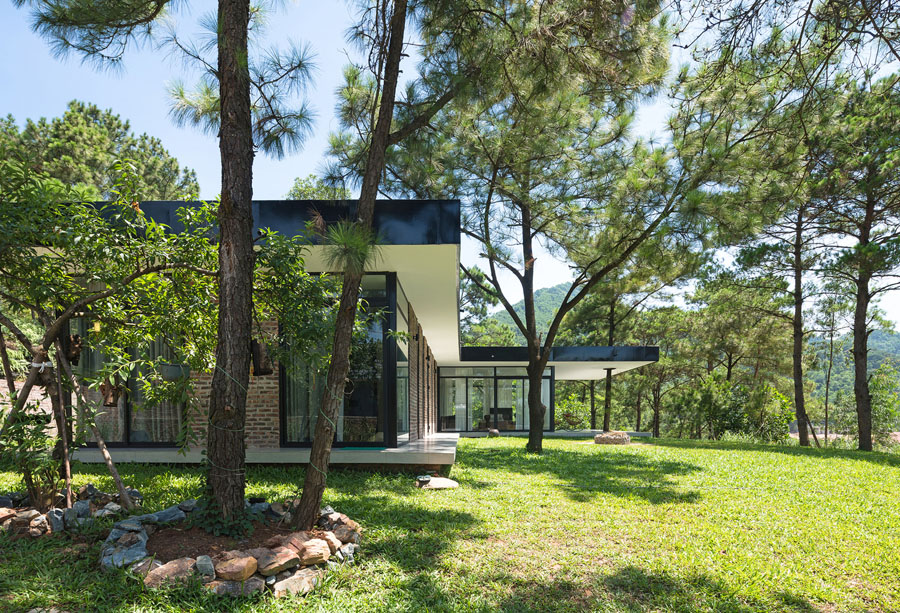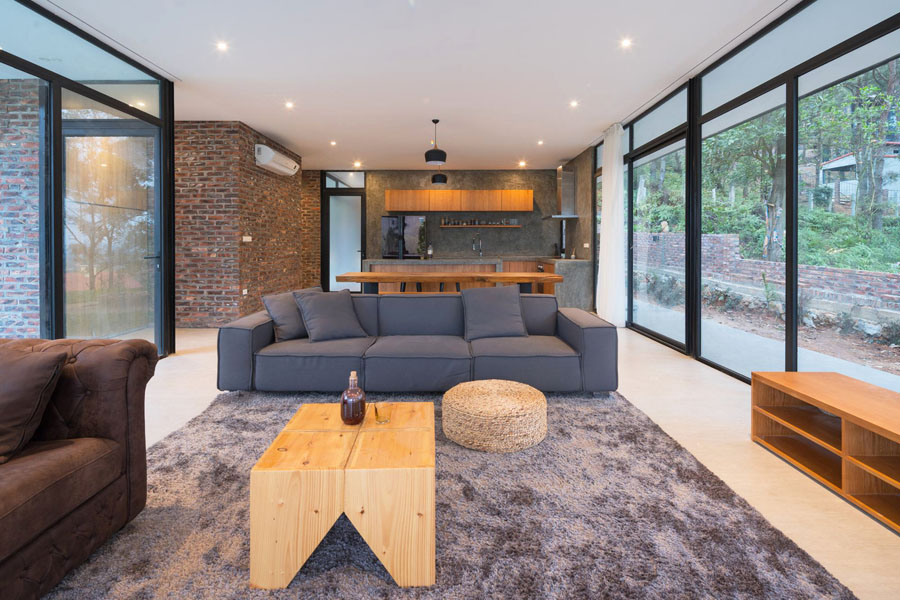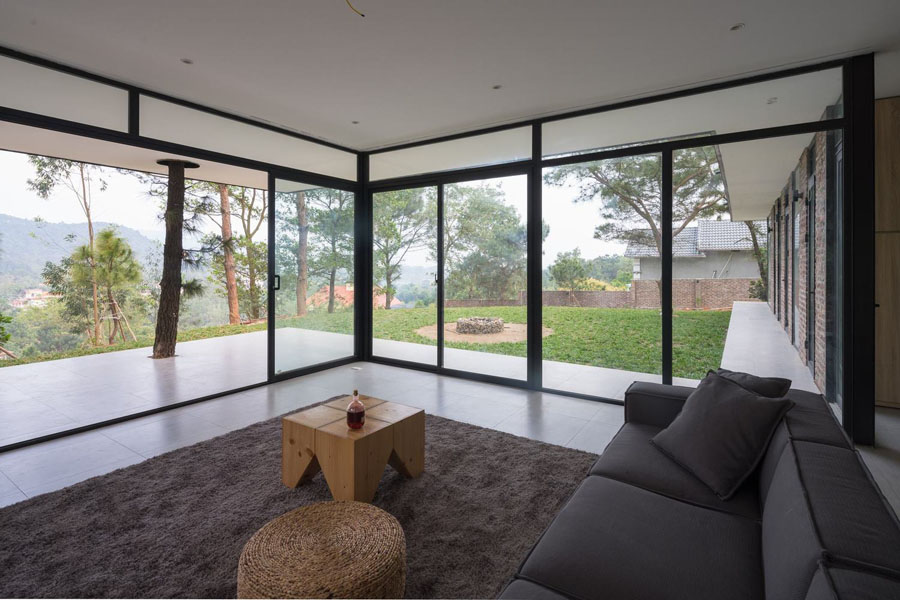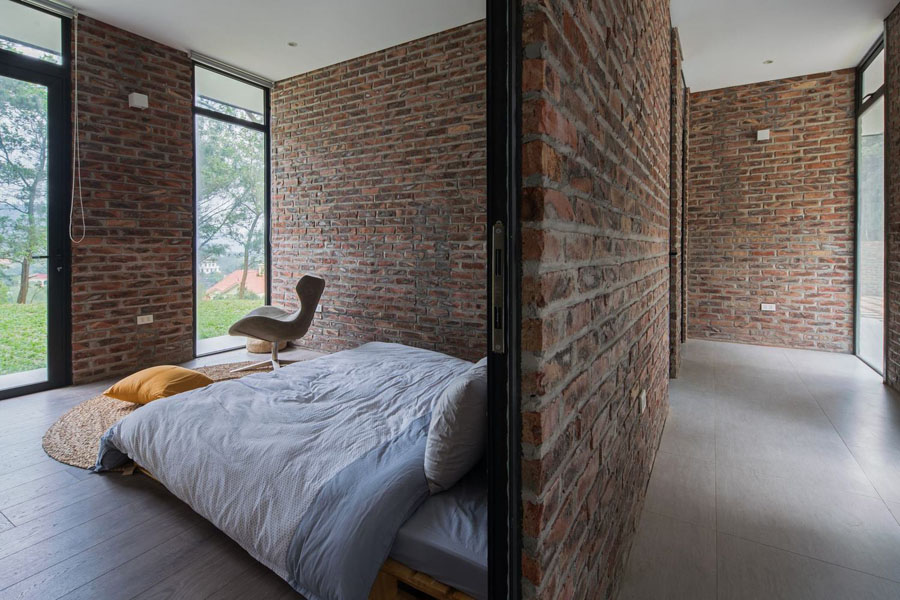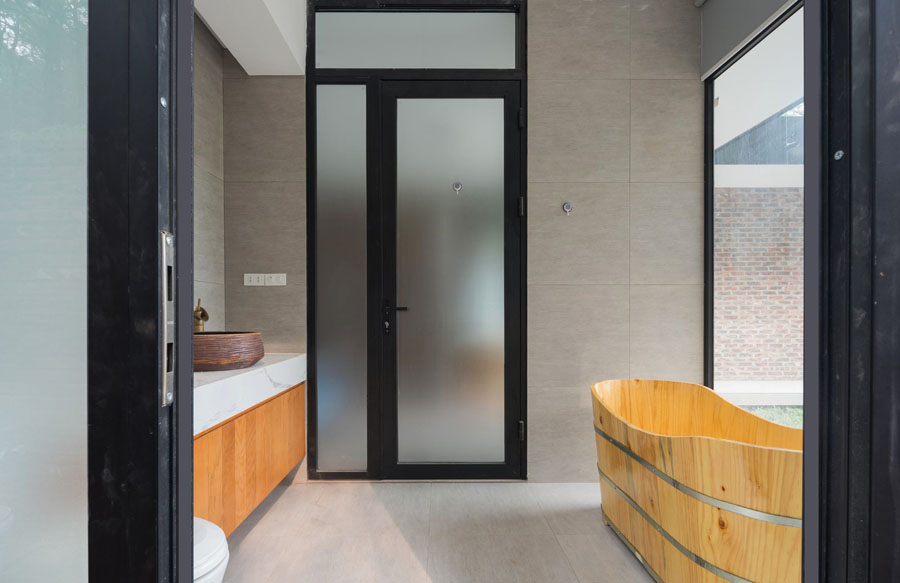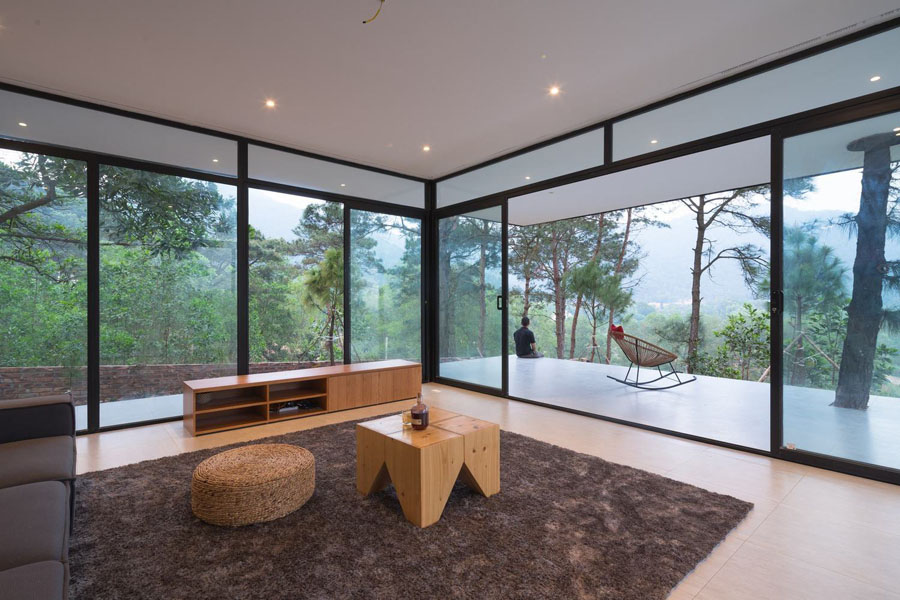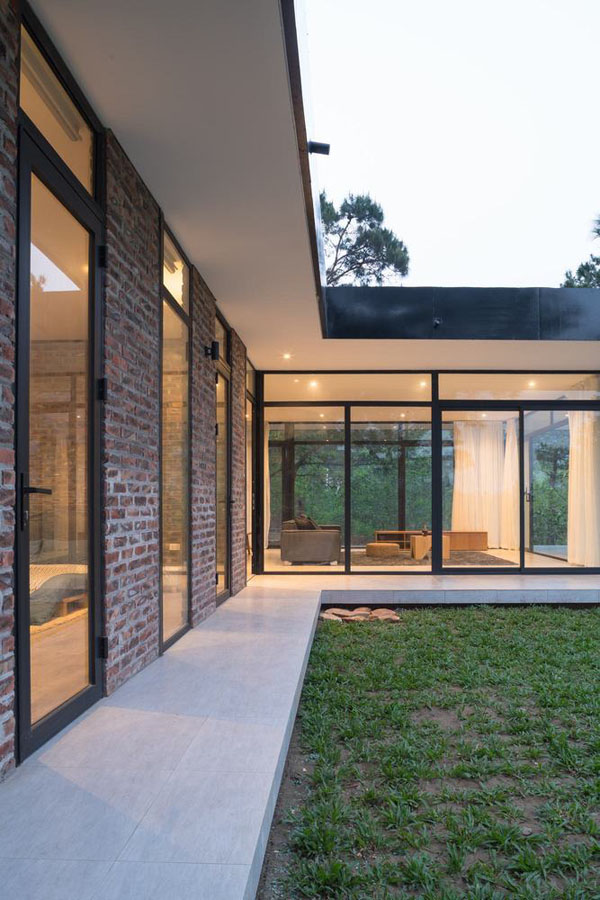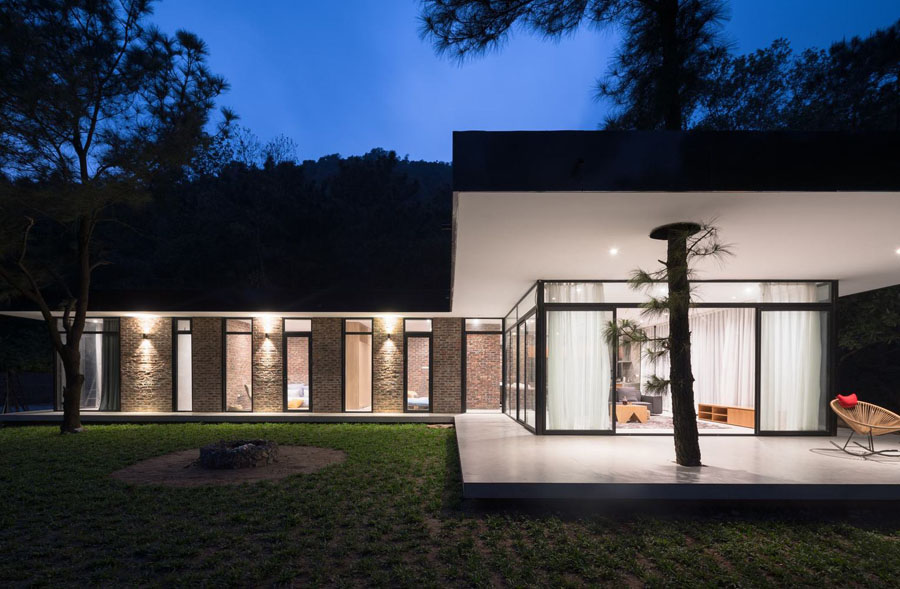/ Hanoi, Vietnam /
/ Story: Kanamon Najaroen / English version: Bob Pitakwong /
/ Photographs: Tuan Nghia Nguyen /
Like a journey through time, a narrow side street in Hanoi is bustled with people talking and going about their business. The sounds of passing vehicles can be heard rising to a deafening crescendo, among others. Together they are the qualities distinctive to the character of this city neighborhood. Amid excited activity and movement stands a tiny house named Maison T. It’s a humble abode that’s home to a young couple who just returned to their birthplace from an extended stay overseas. It’s small, yet it provides a sense of belonging and a place to relax and unwind after a long day at work.
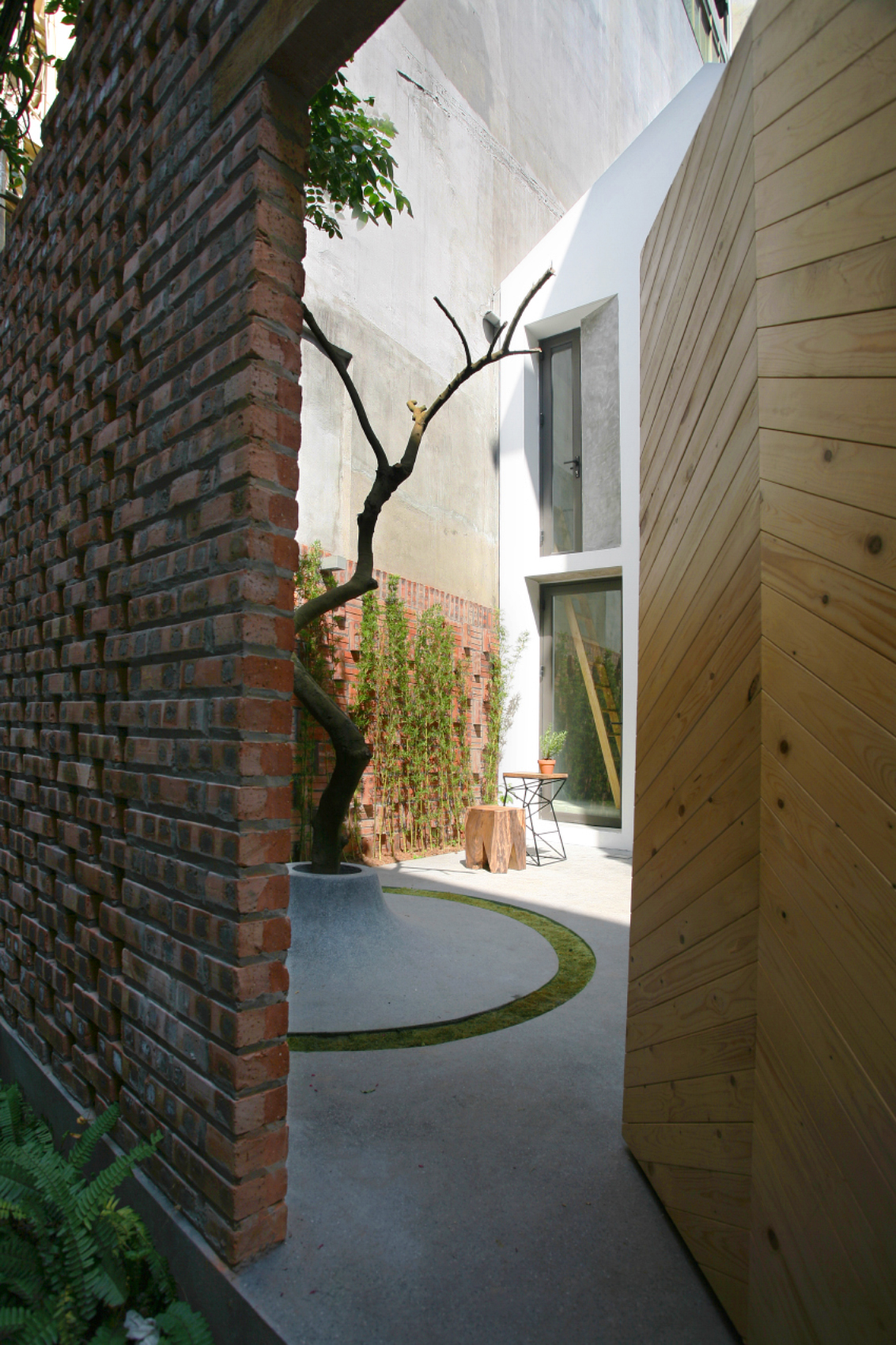
What a pleasant surprise! The little house on a crowded street is enjoyable, quiet and free from interruption. It’s thoughtfully devised to reach out and connect with others in the community.
Small space? Not a problem! The friendly and happy homeowners show care and concern for their next door neighbors. Even their pet dog is well-liked and gets along just fine with others, thanks in part to a small well-lighted front yard made for warm greetings and bringing joy to the family.
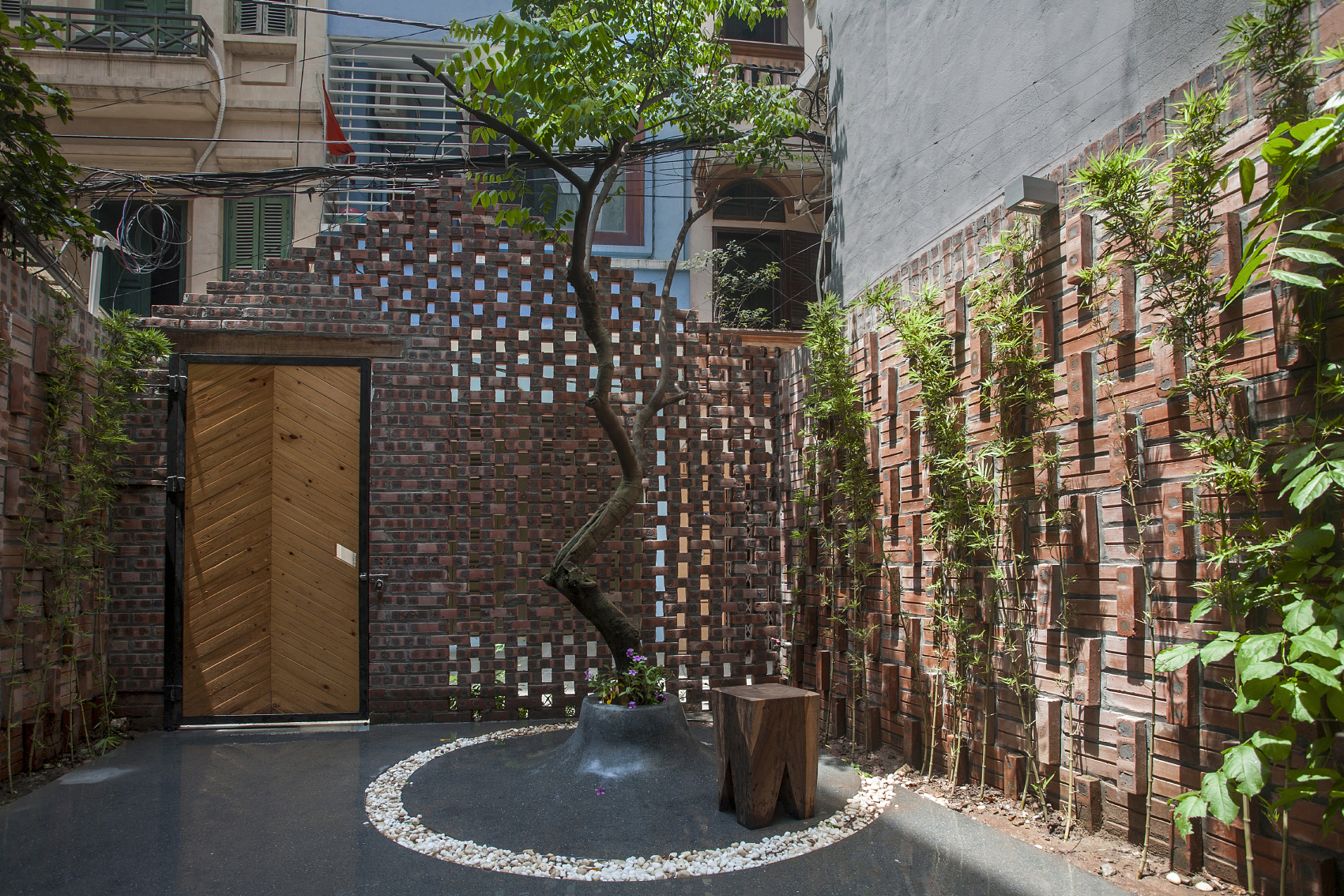
Needless to say the overall effect is impressive. The design team at Nghia-Architect has succeeded in transforming a house that felt stuffy sandwiched between taller buildings into a light and airy living space.
As the architects put it, being located in a prime urban neighborhood, every square inch counts and every square inch amounts to an ounze of gold, to put it mildly. Hence, it’s a good idea to make the most of it and, with innovative design, turn it into a refreshing haven.
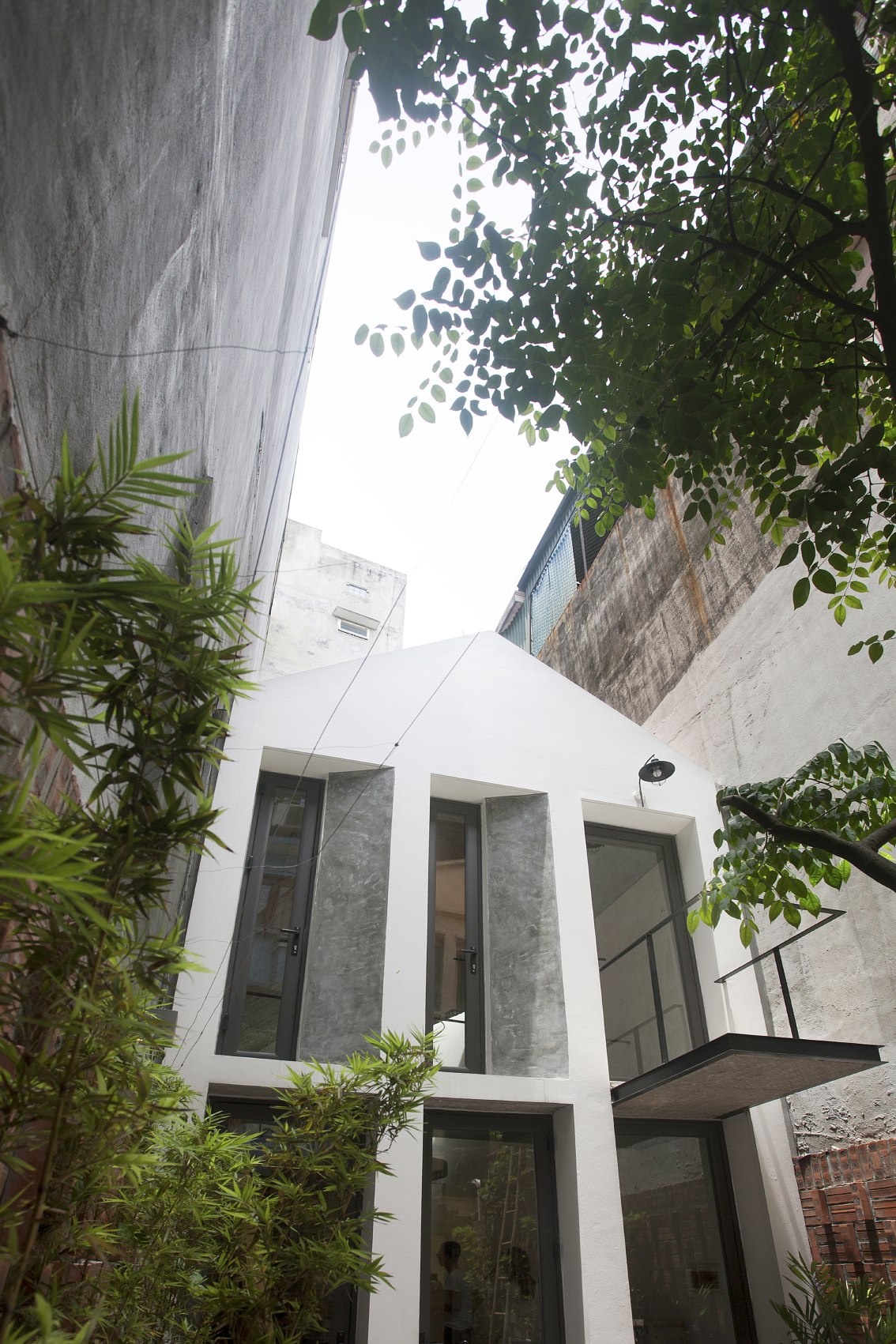
In response to a difficult situation, they put in a front yard with climbing vines on both sides the wall. Upfront, a perforate brick fence wall separates the home from the street below. Notwithstanding the limited space, the area of ground surrounded by tall buildings becomes their pride and joy, thanks to the newly added lush greenery.
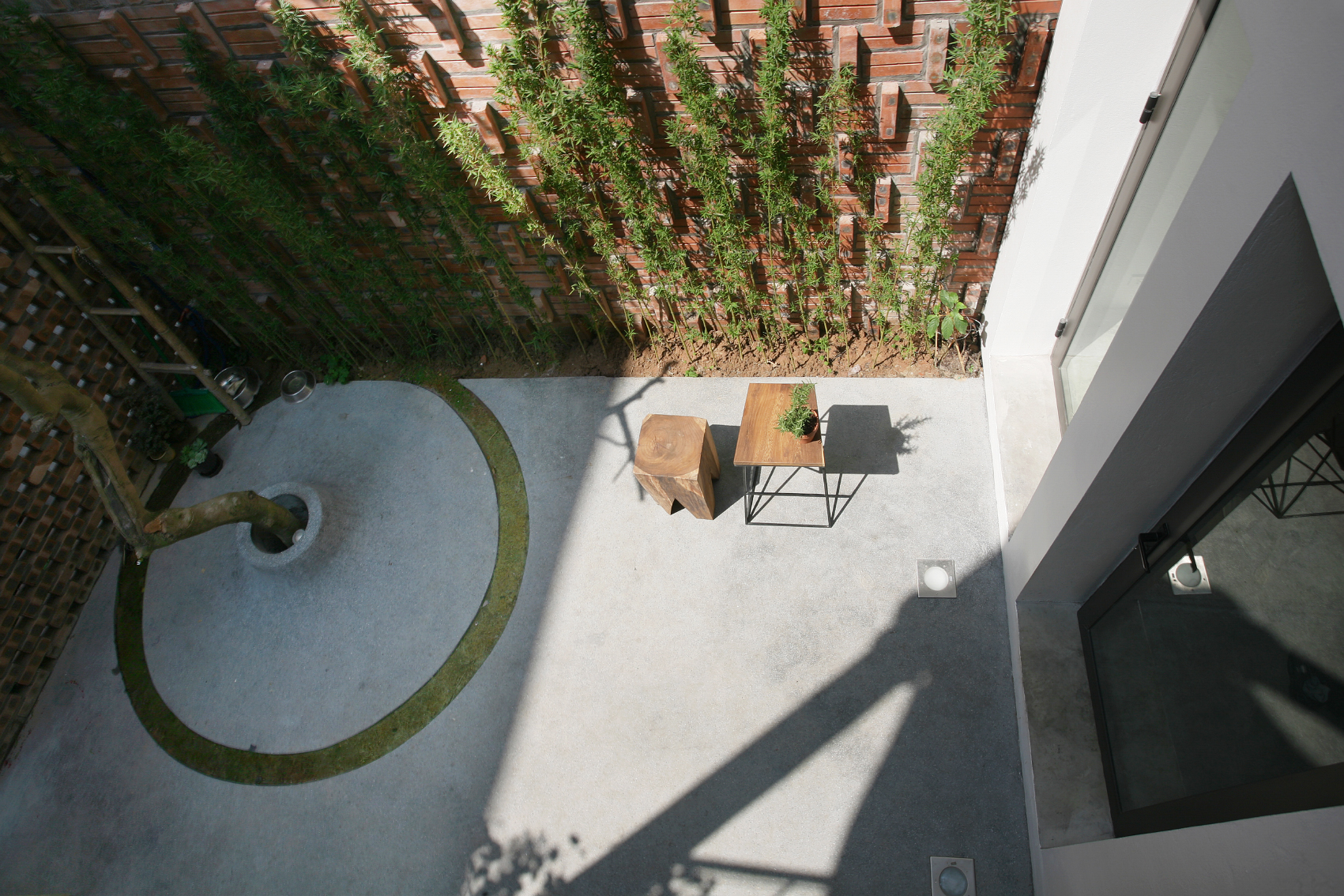
The brick fence wall in dark vintage brown looks like a house facade from a distance. It serves multiple purposes. Holes in the perforate shell allow air to pass through, provide a warm and inviting atmosphere and, at the same time, protect the privacy of the family living within.
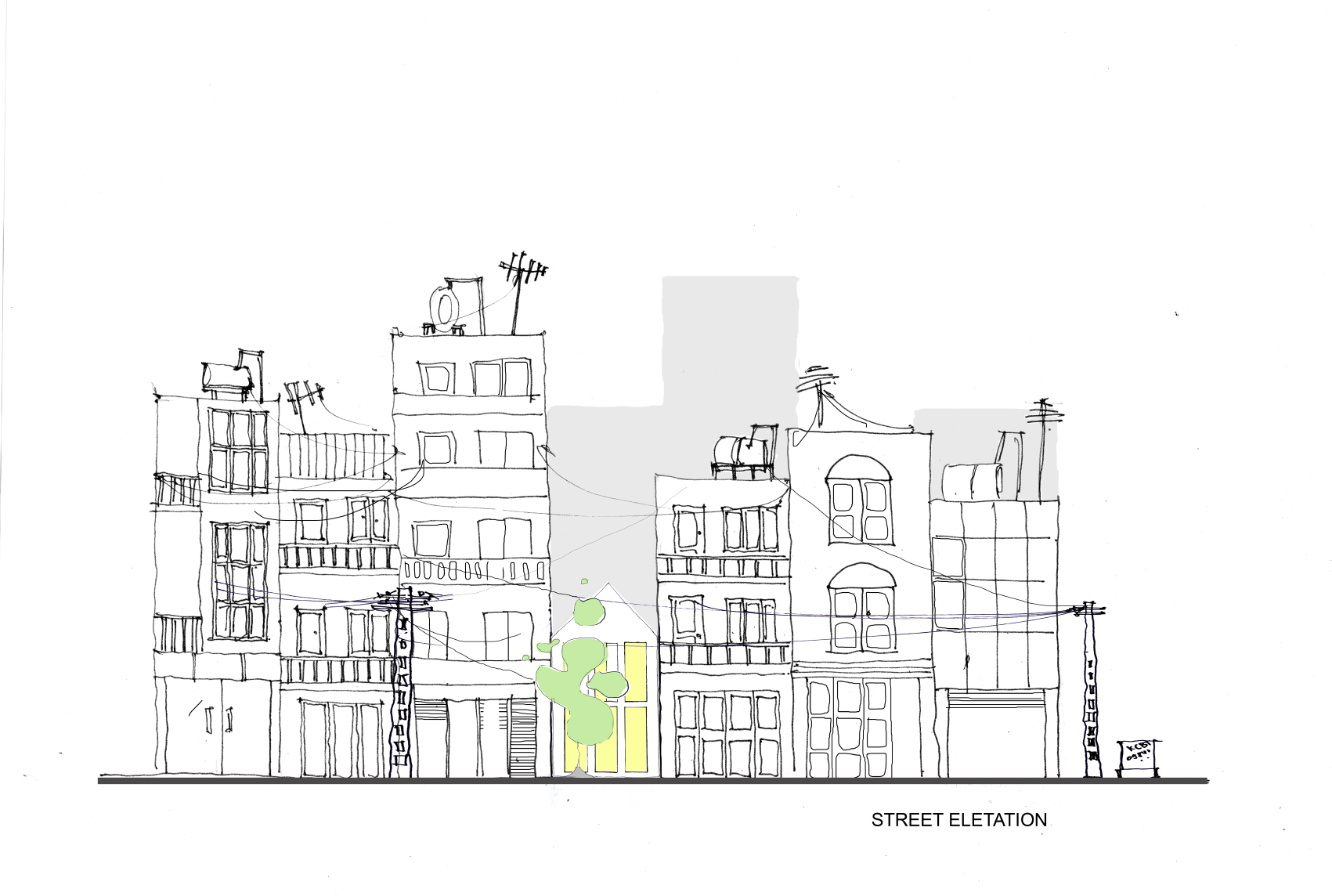
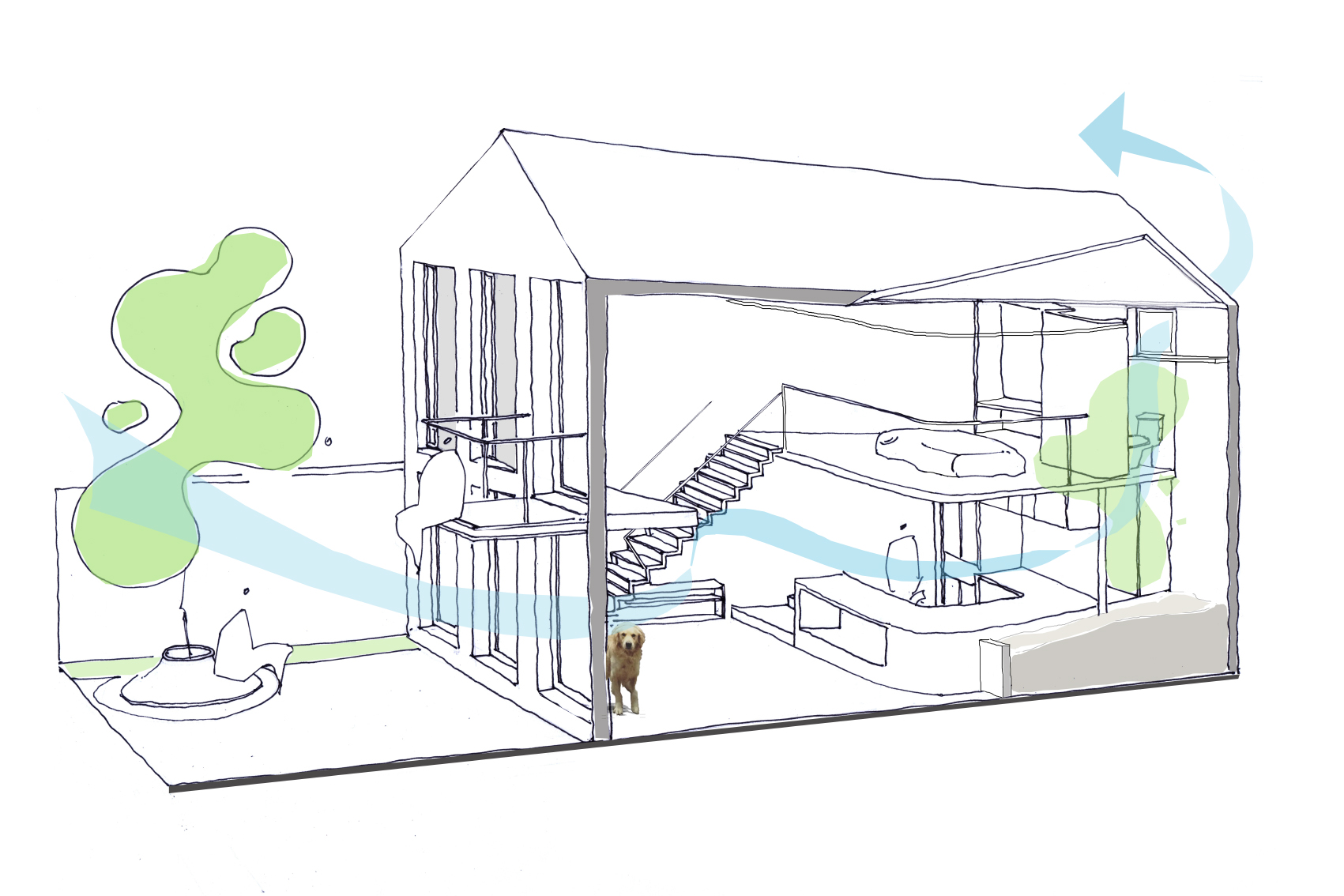
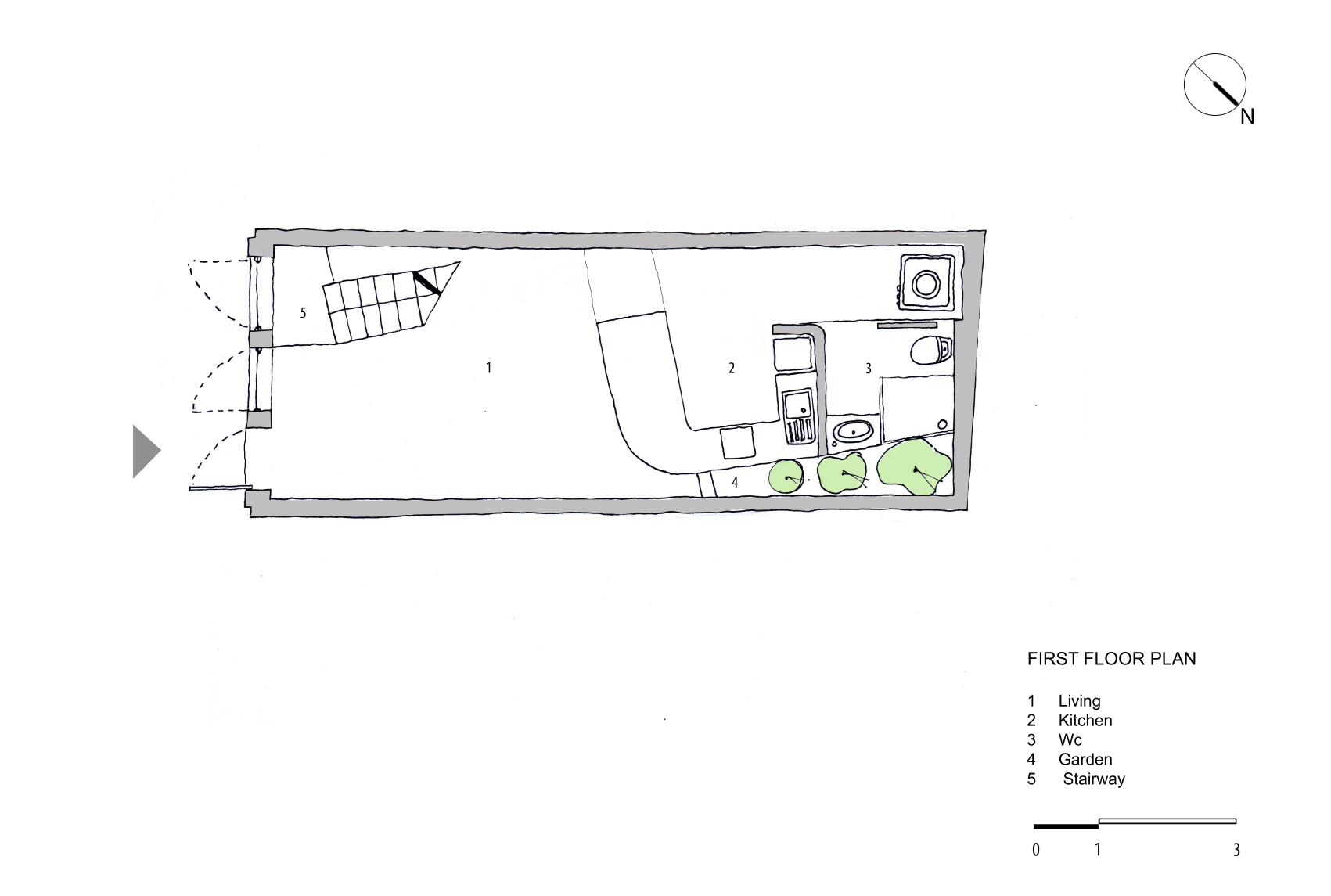
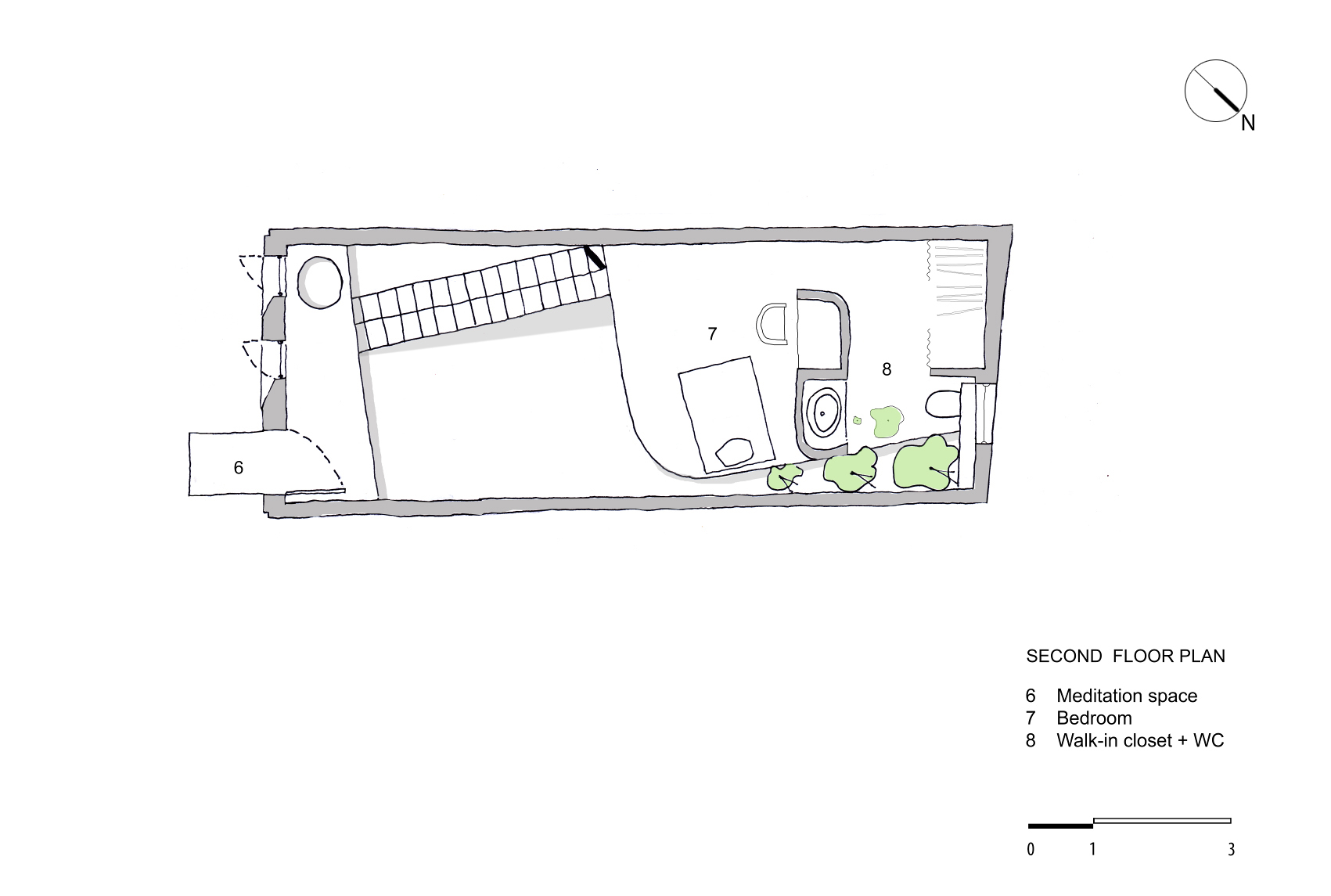
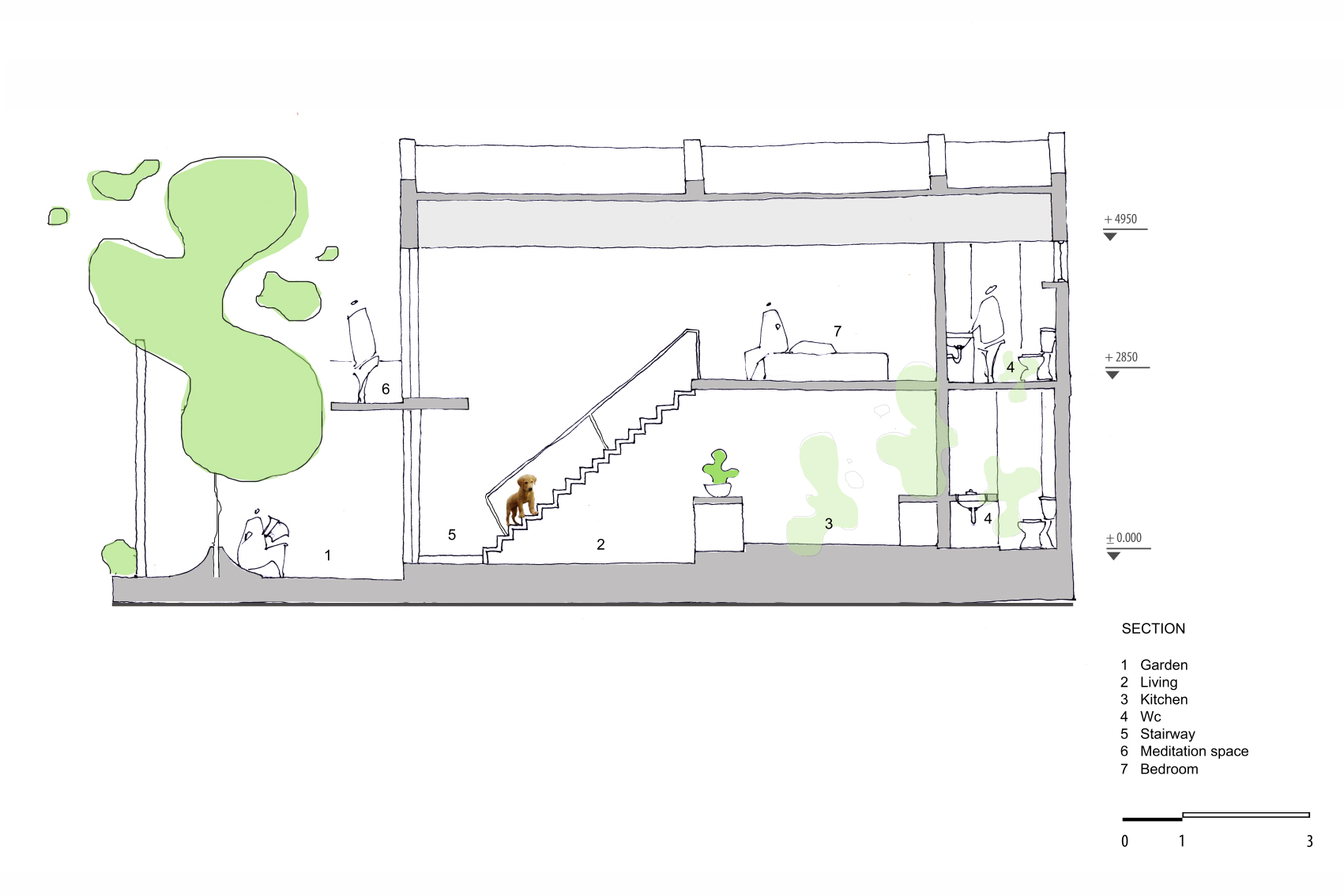
Walk in the door, and you find two levels of usable space; the ground floor with a double height ceiling, and a mezzanine holding the bedroom. Each level measures just 40 square meters.
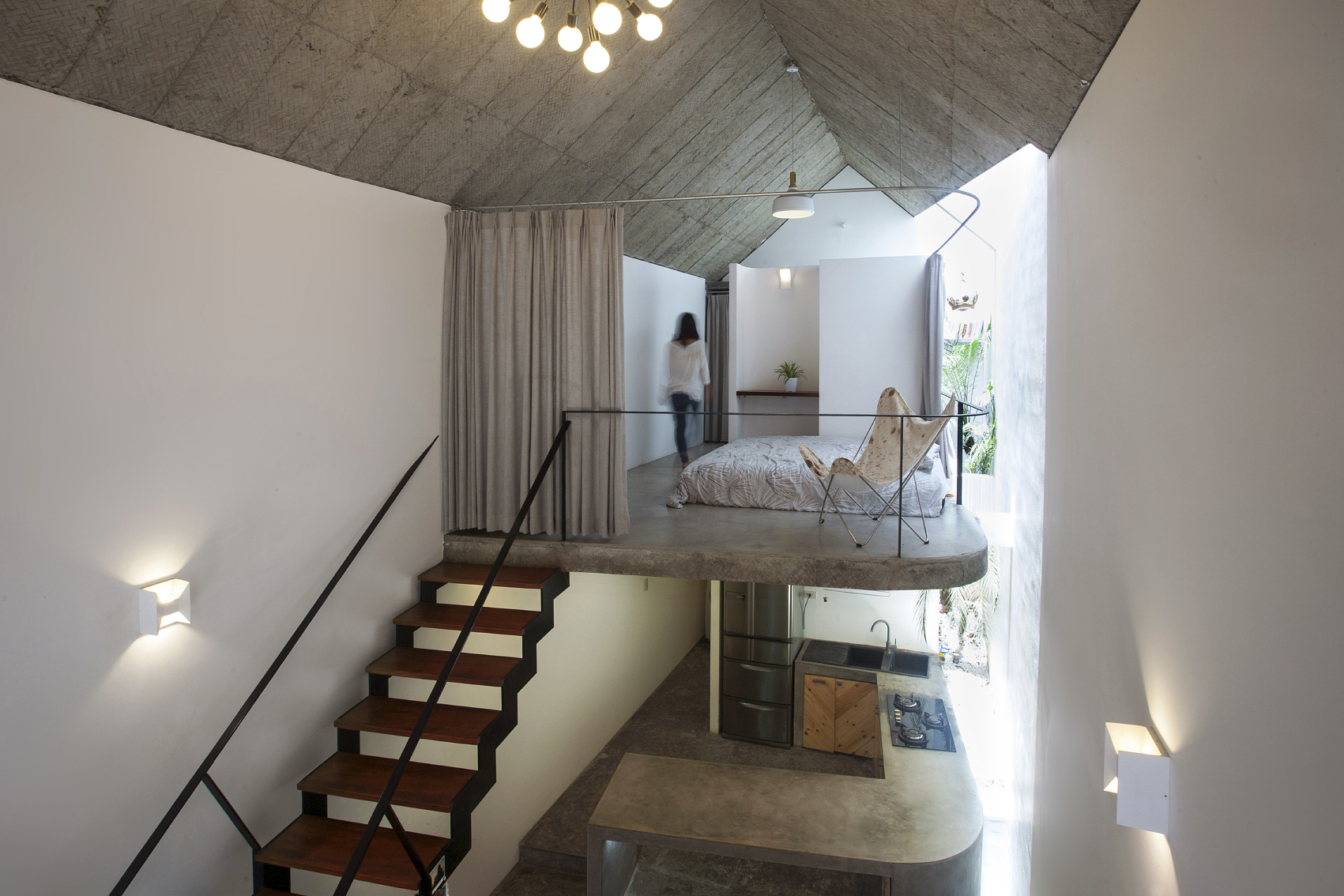
As the design team intended, the tiny house perfectly balances space and maneuverability. Thanks to open-concept design, all the rooms and service areas are easily accessed.
There are no solid dividers separating the interior into different rooms, a clever hack to get rid of stale air in stuffy rooms. Plus, the double height ceiling makes the interior feel easy on the eyes, and it gives a sense of space.
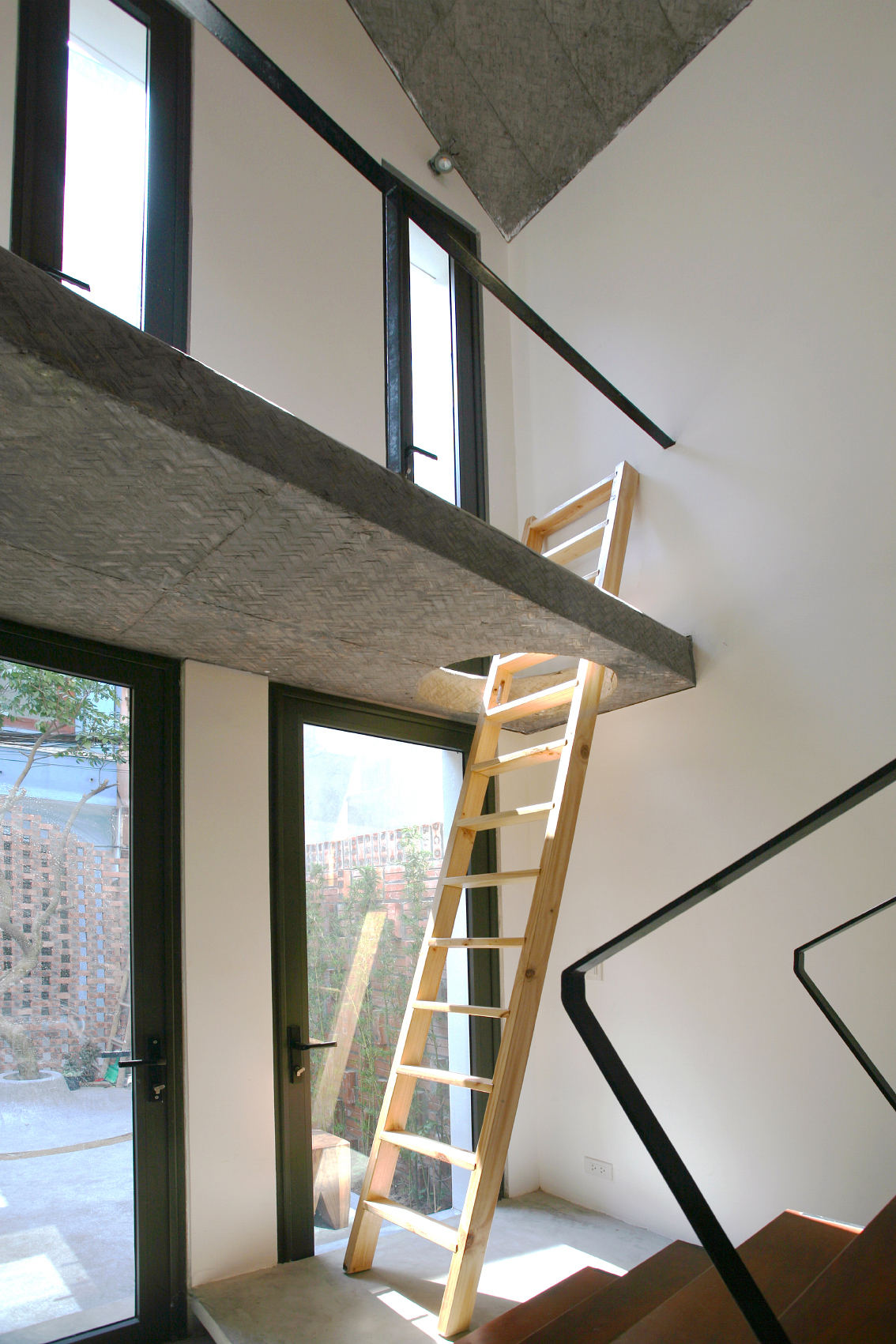
Downstairs, the living room under a high ceiling is separated from the kitchen by an L-shaped concrete countertop at waist height. The kitchen space serves a dual purpose; as food preparation area, and as washing and laundry room.
The counter itself is slanted slightly inward to create extra space along the wall for a side yard illuminated by rooftop skylights. This in turn makes the home feel bright without the help of light shining in through the front facade, a nice strategy to banish stale air in stuffy rooms.
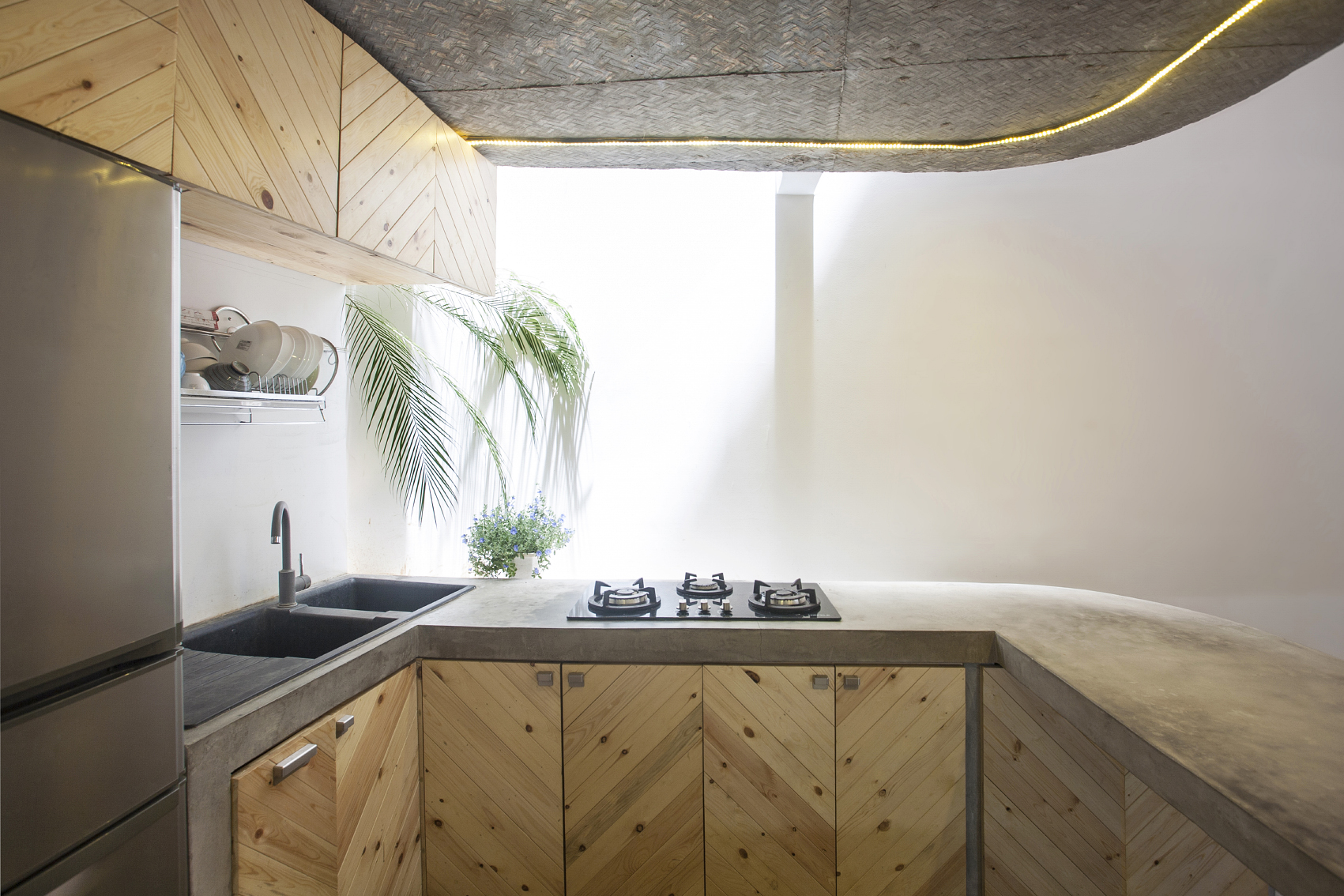
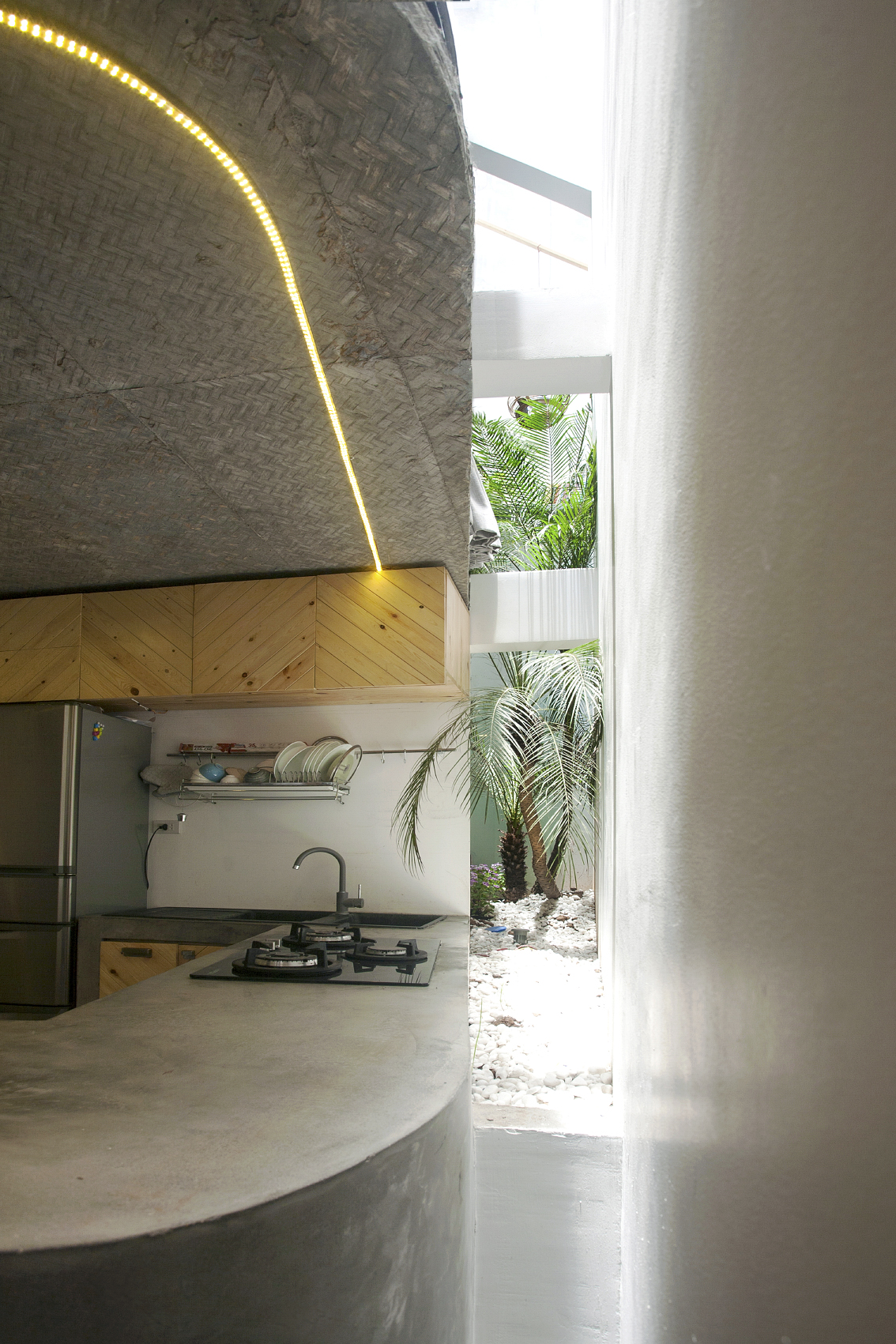
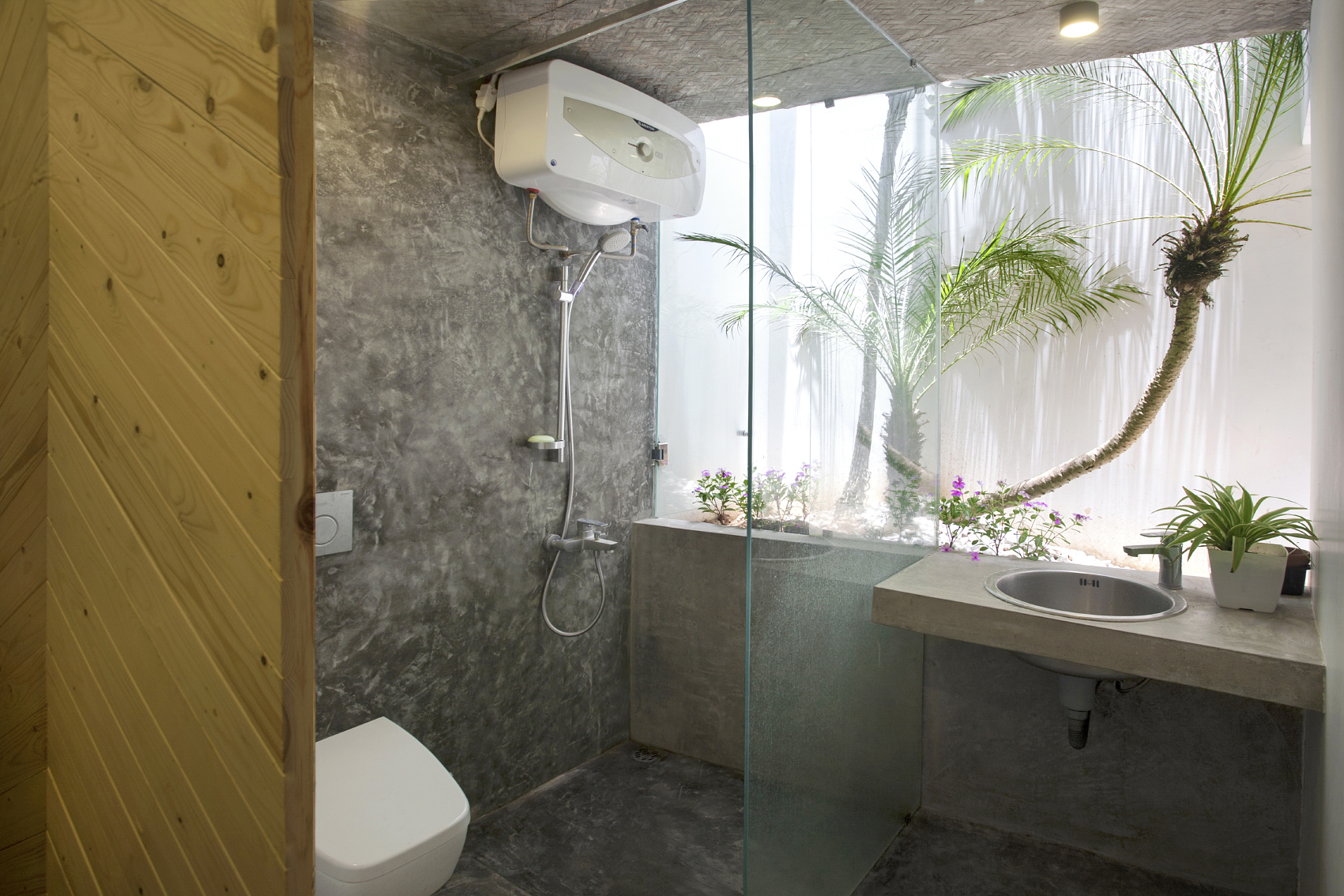
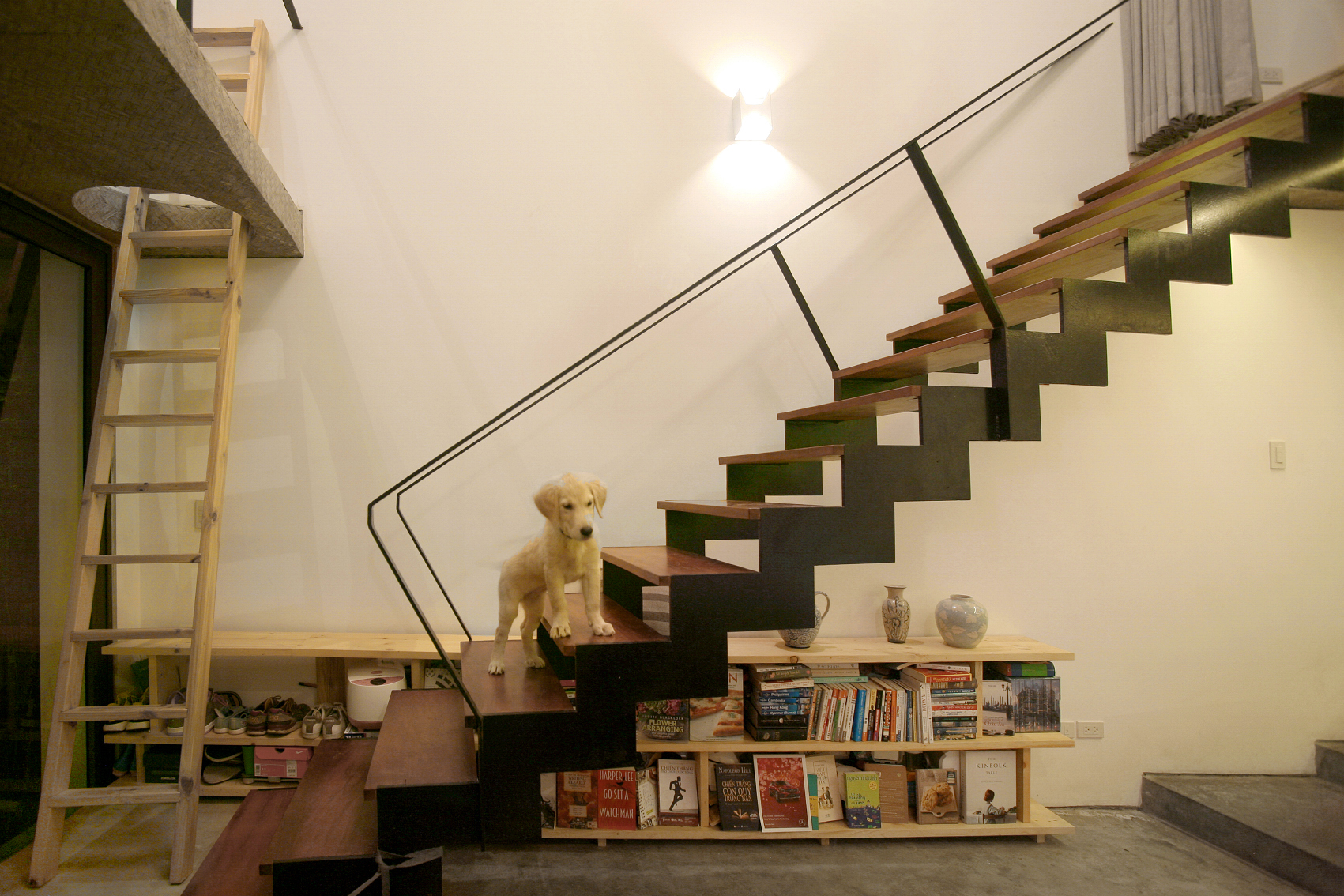
To the left side, a set of stairs made of steel provides access to the mezzanine holding the bedroom under a high pitched gable roof. There are no solid dividers separating the interior into different rooms. Instead, to control the amount of light shining in, the bedroom is hung with a privacy curtain suspended from a curved railing system.
The architects chose brickwork and naked concrete finishes for the walls for an appearance that’s easy to care for and pleasant to look at.


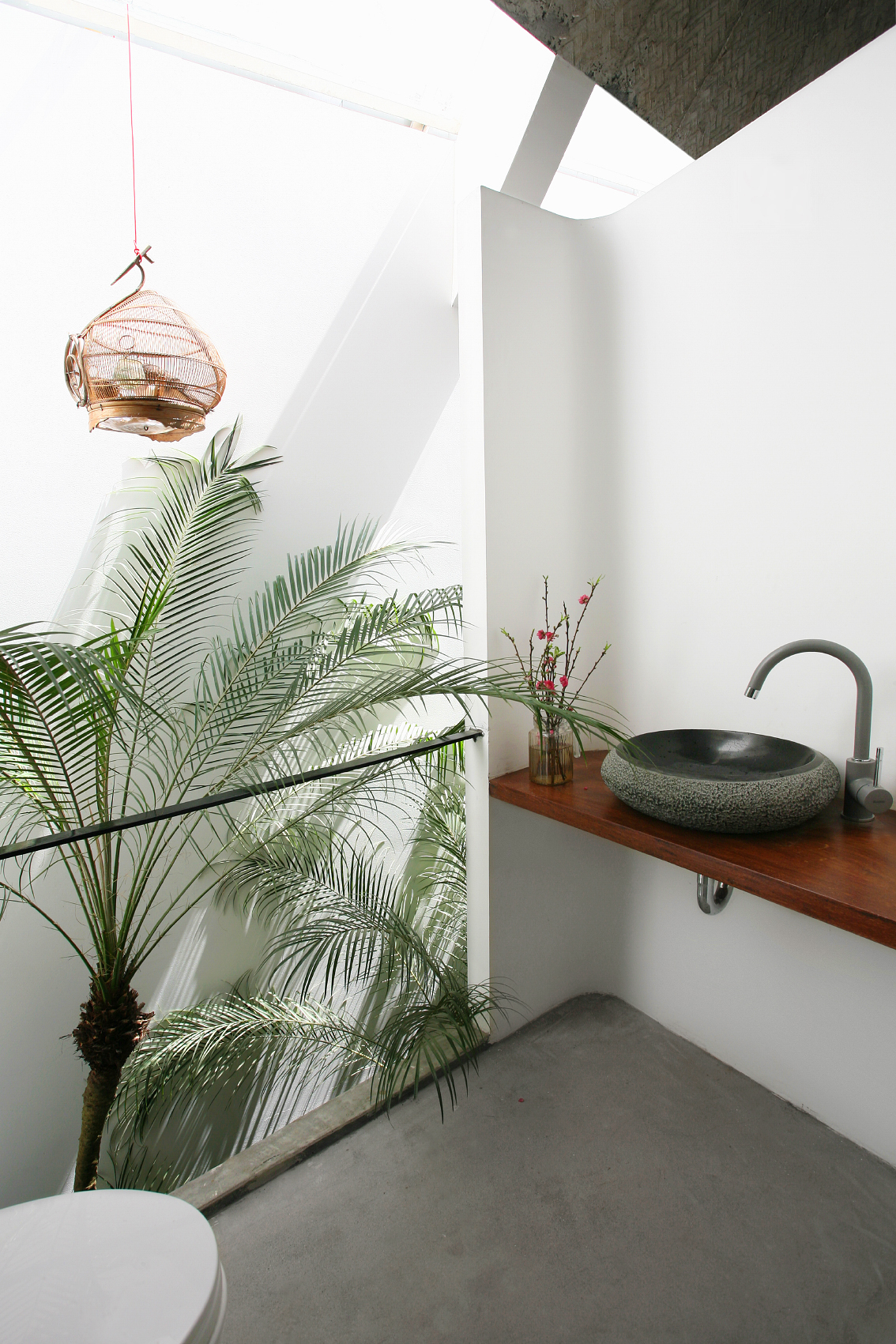
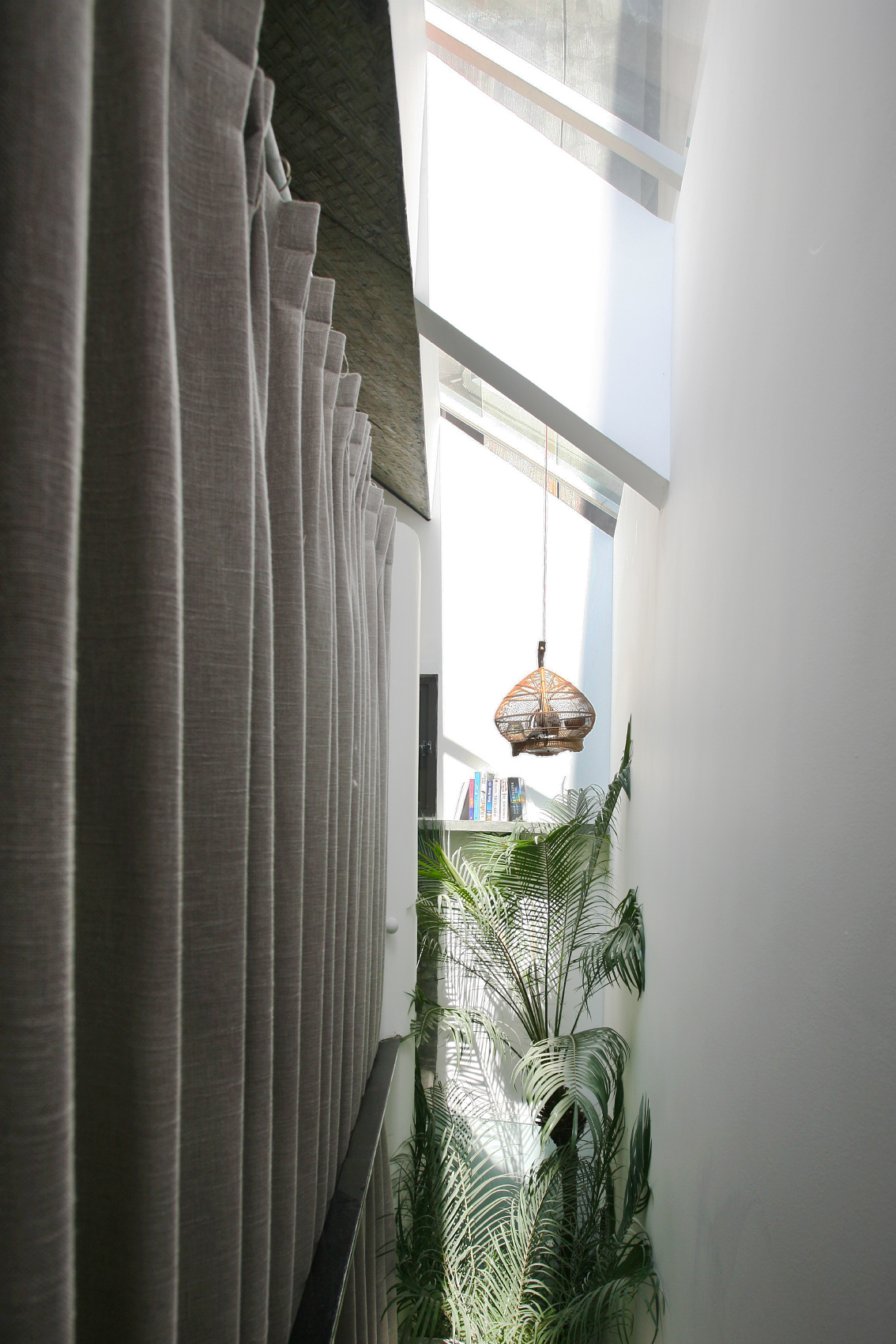
In a tourist destination full of people doing things and moving about like Hanoi, using every available space effectively is the key to living a happy and fulfilling life. Amid all the excitement, noises and traffic passing by, a tiny house named Maison T rises above the challenges.
For the young couple who lives here, it is warm, cozy and comfortable. Although small, it is a calm and peaceful place to rest the eye, relax and escape from the fast pace of city life. Plus, it is good to add greenery to the neighborhood.
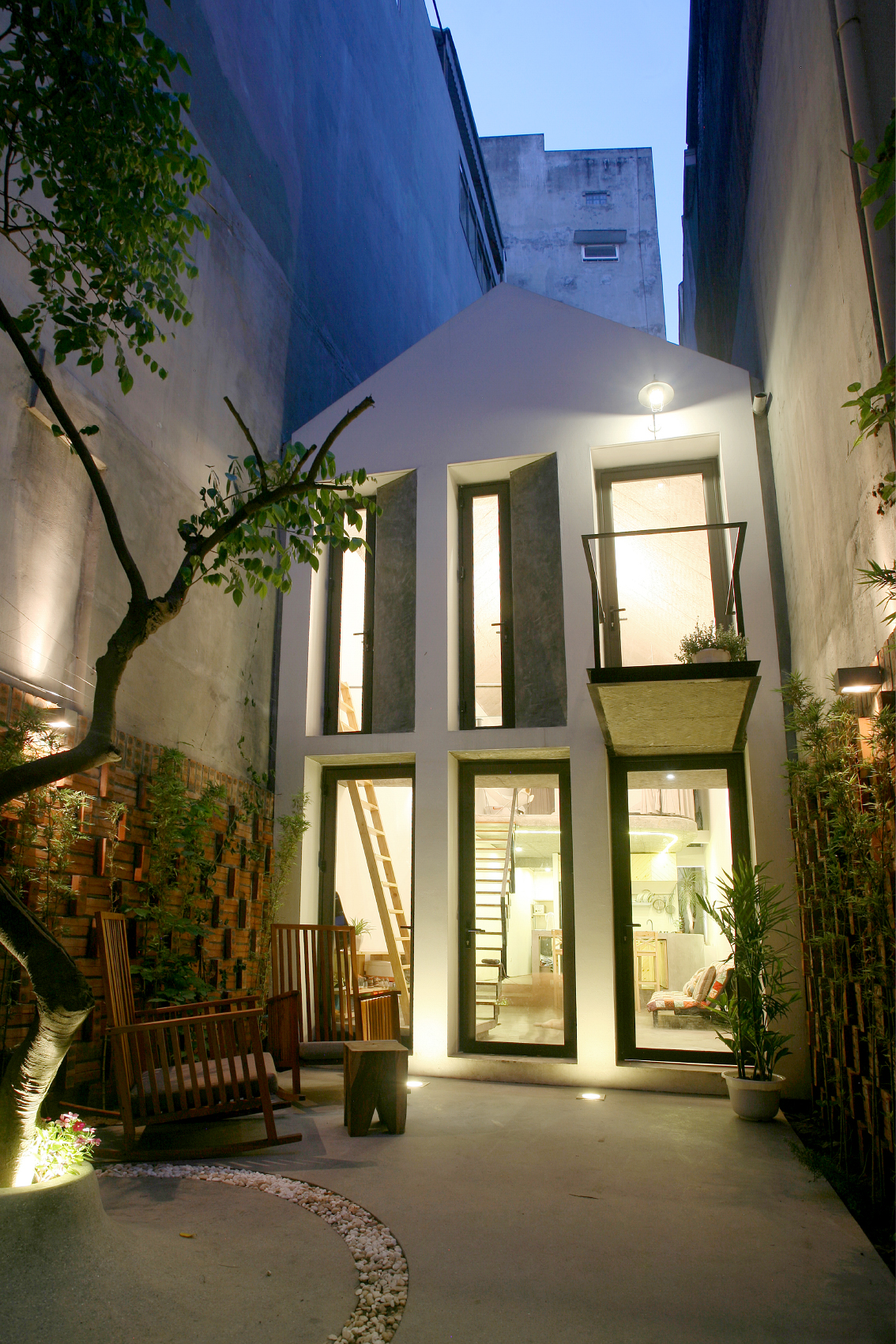
Architect: Nghia-Architect
You may also like…
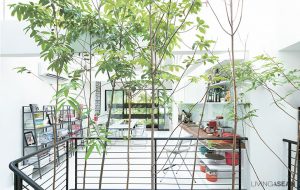 An Open Concept Urban Home with a Minimalist Flair in Kuala Lumpur
An Open Concept Urban Home with a Minimalist Flair in Kuala Lumpur
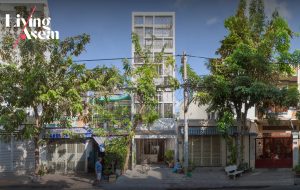 Tan Phu House: From a Stuffy, Narrow Shophouse to a Multi-Floor Home with Rooftop Garden
Tan Phu House: From a Stuffy, Narrow Shophouse to a Multi-Floor Home with Rooftop Garden

